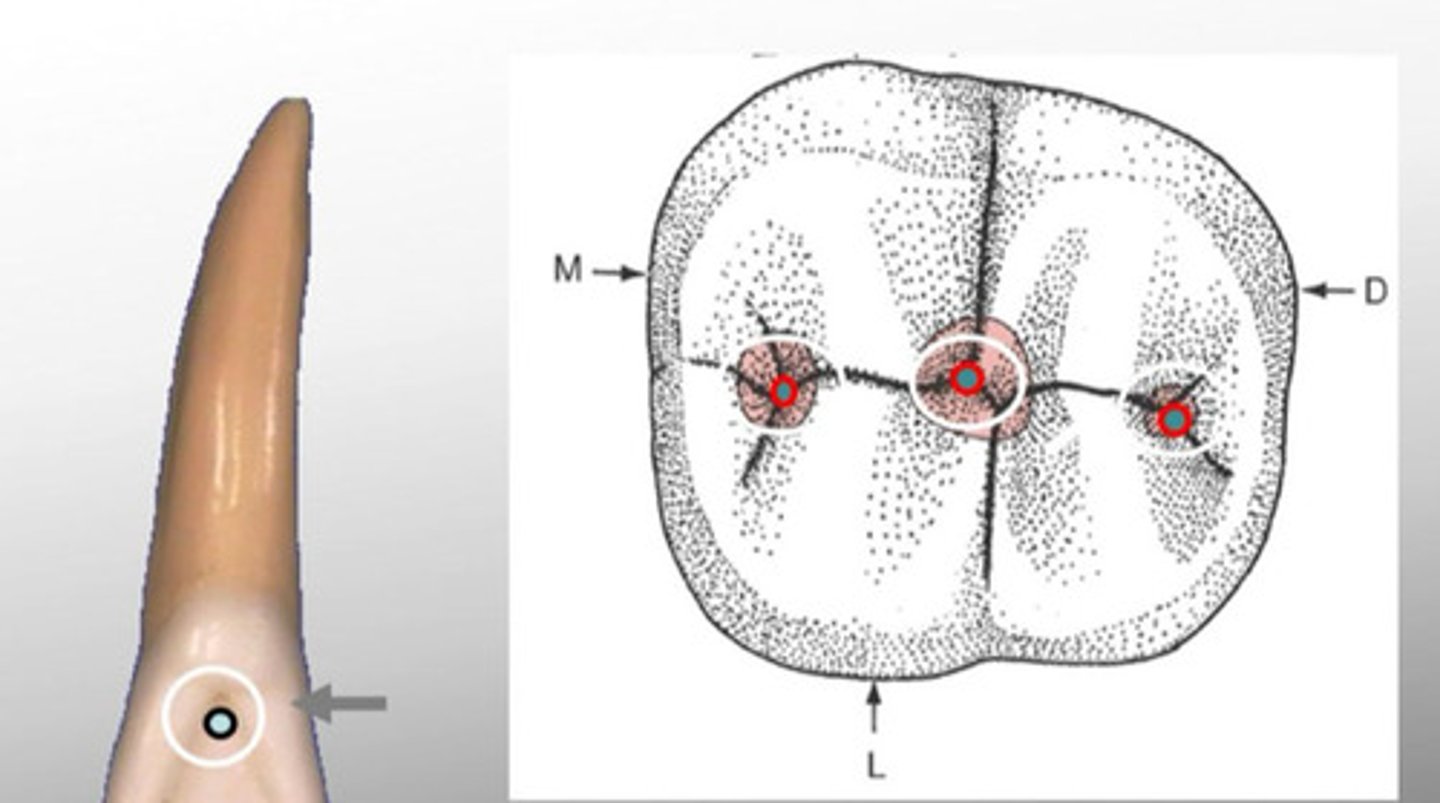PRD 130: Anatomy/Nomenclature
1/85
There's no tags or description
Looks like no tags are added yet.
Name | Mastery | Learn | Test | Matching | Spaced |
|---|
No study sessions yet.
86 Terms
Anterior teeth
Incisors and canines
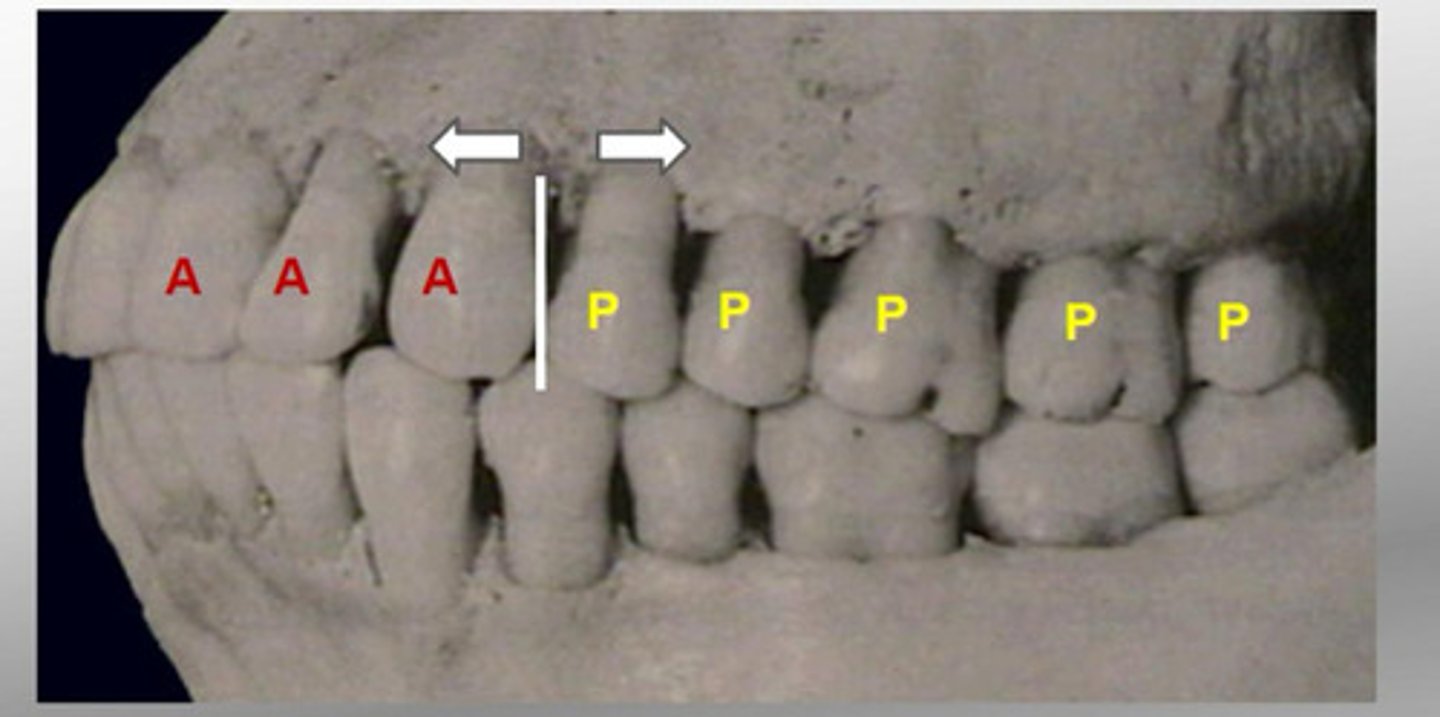
Maxillary arch
Upper arch
Mandibular arch
lower arch
Primary dentition
During childhood (6 months to 2 years0
Primary dentition
10 maxillary and 10 mandibular
Permanent dentition
The set of 32 secondary teeth
Central incisor
I (medial)
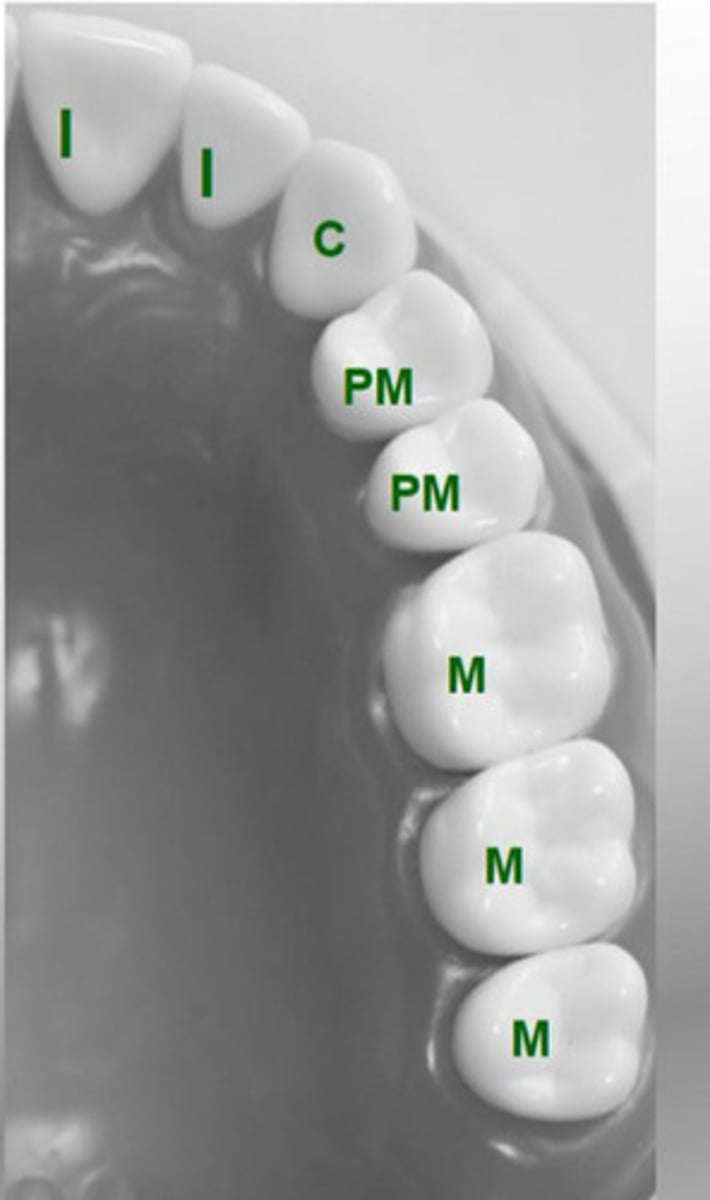
Lateral incisor
I (distal)
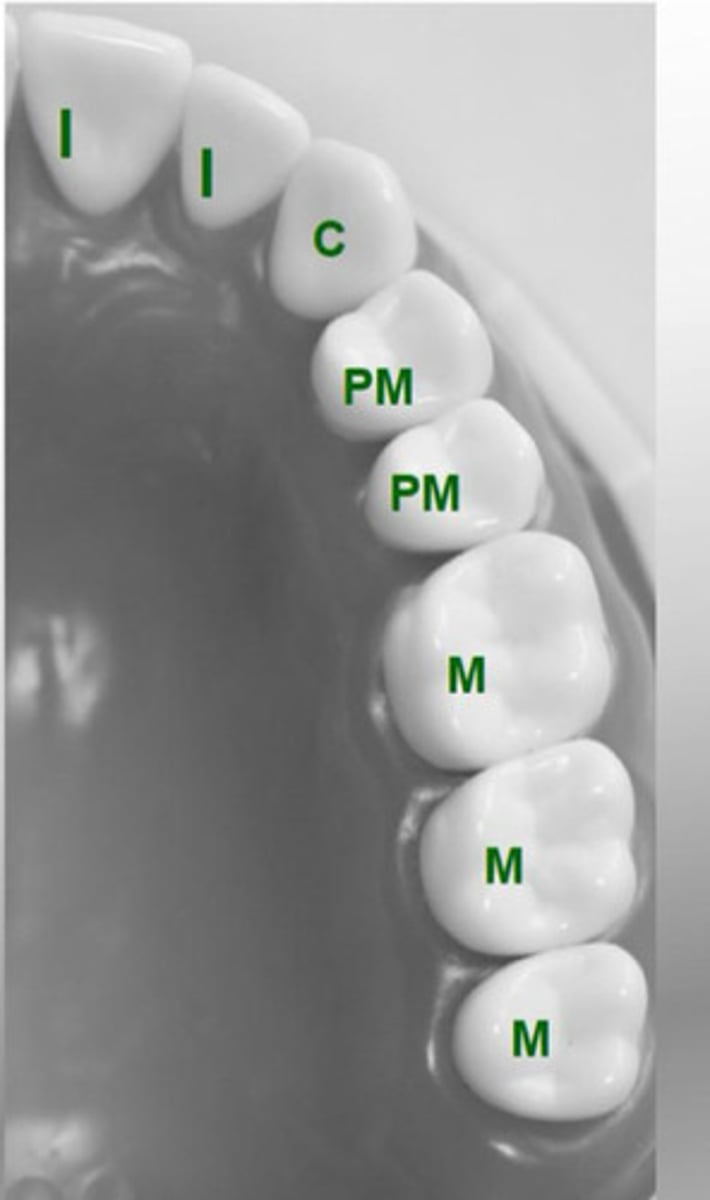
Canine
C
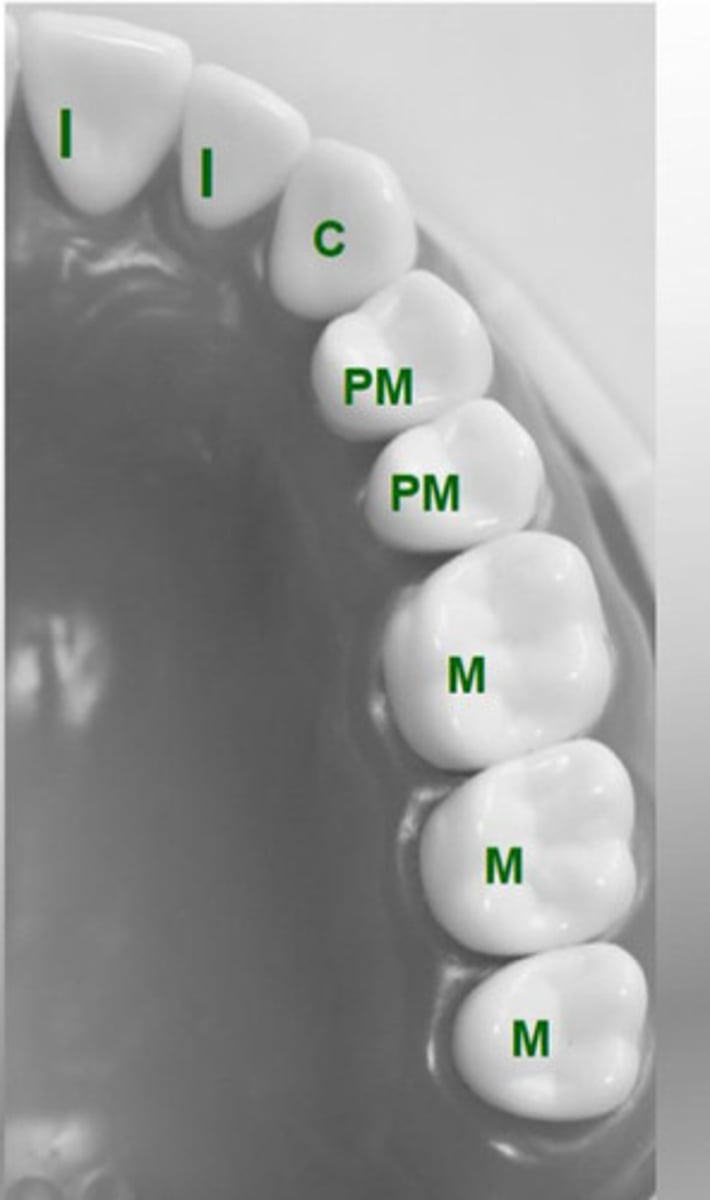
Pm (medial)
1st premolar
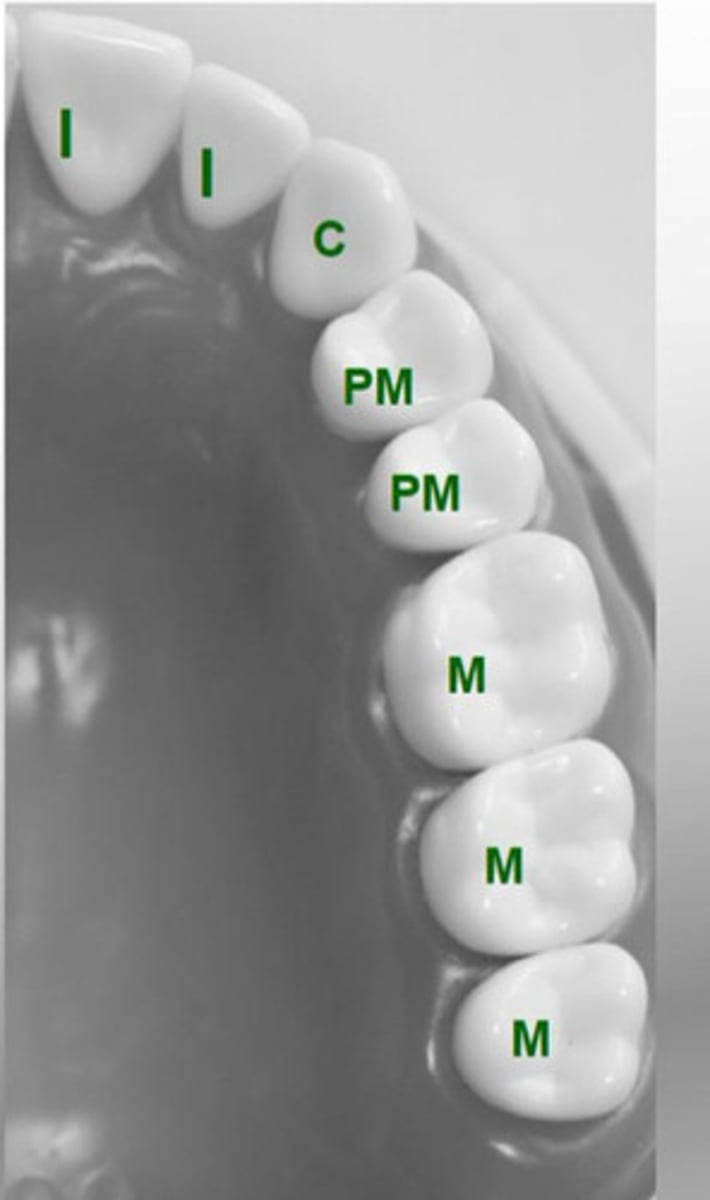
Pm (distal)
2nd premolar
M (medial)
1st molar
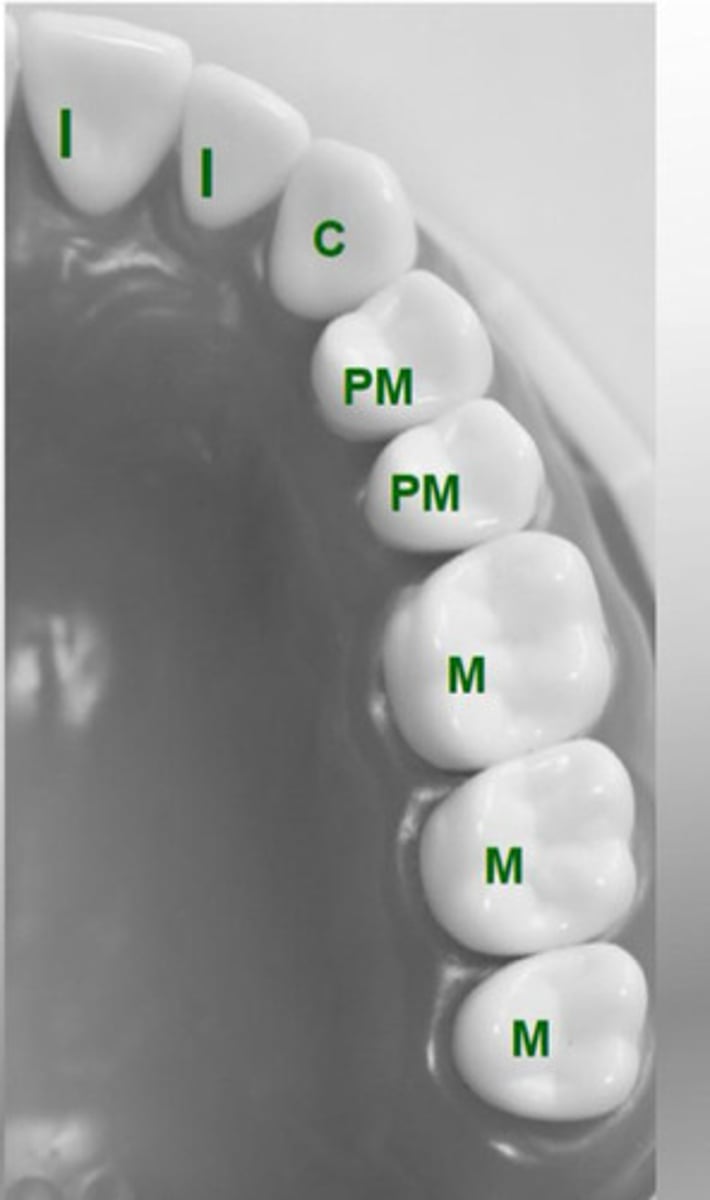
M (second most medial)
2nd molar
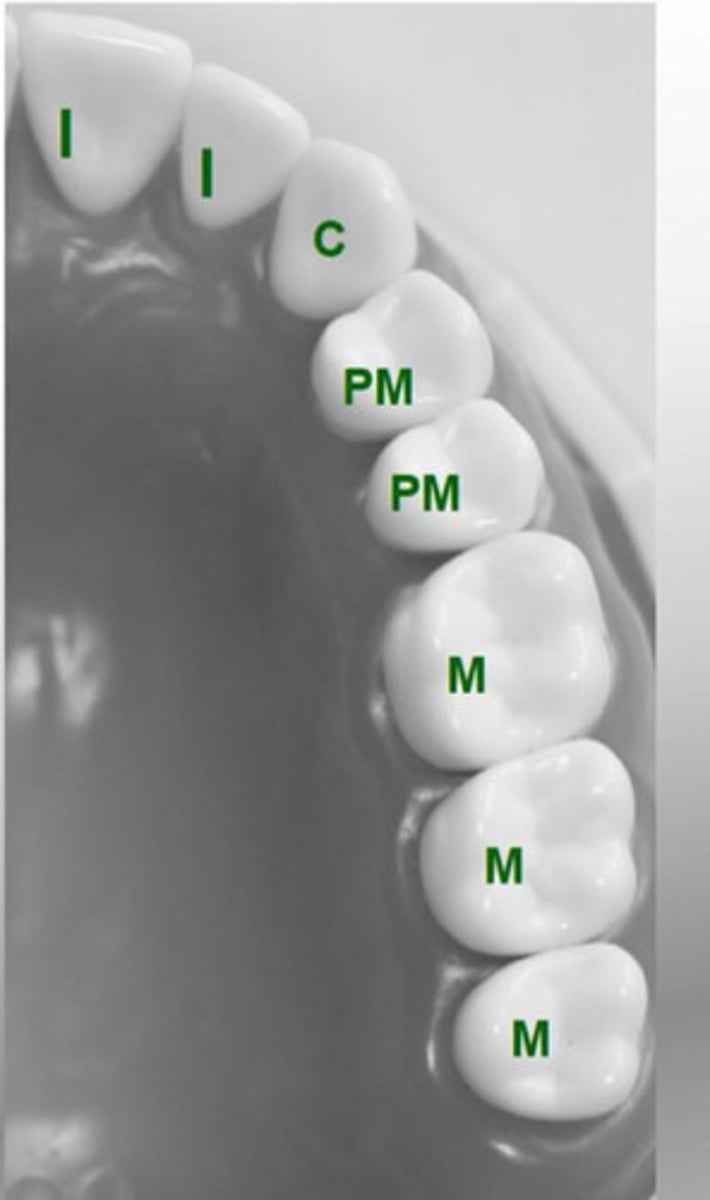
M (most distal)
3rd molar
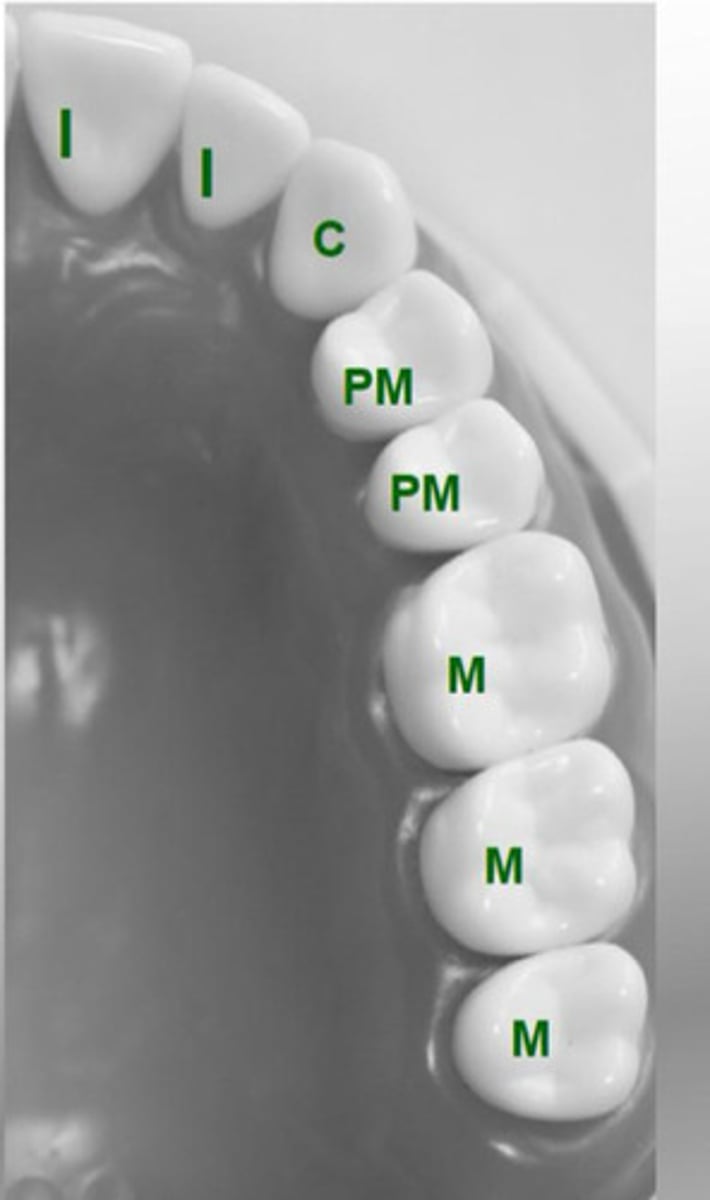
Posterior teeth
premolars and molars
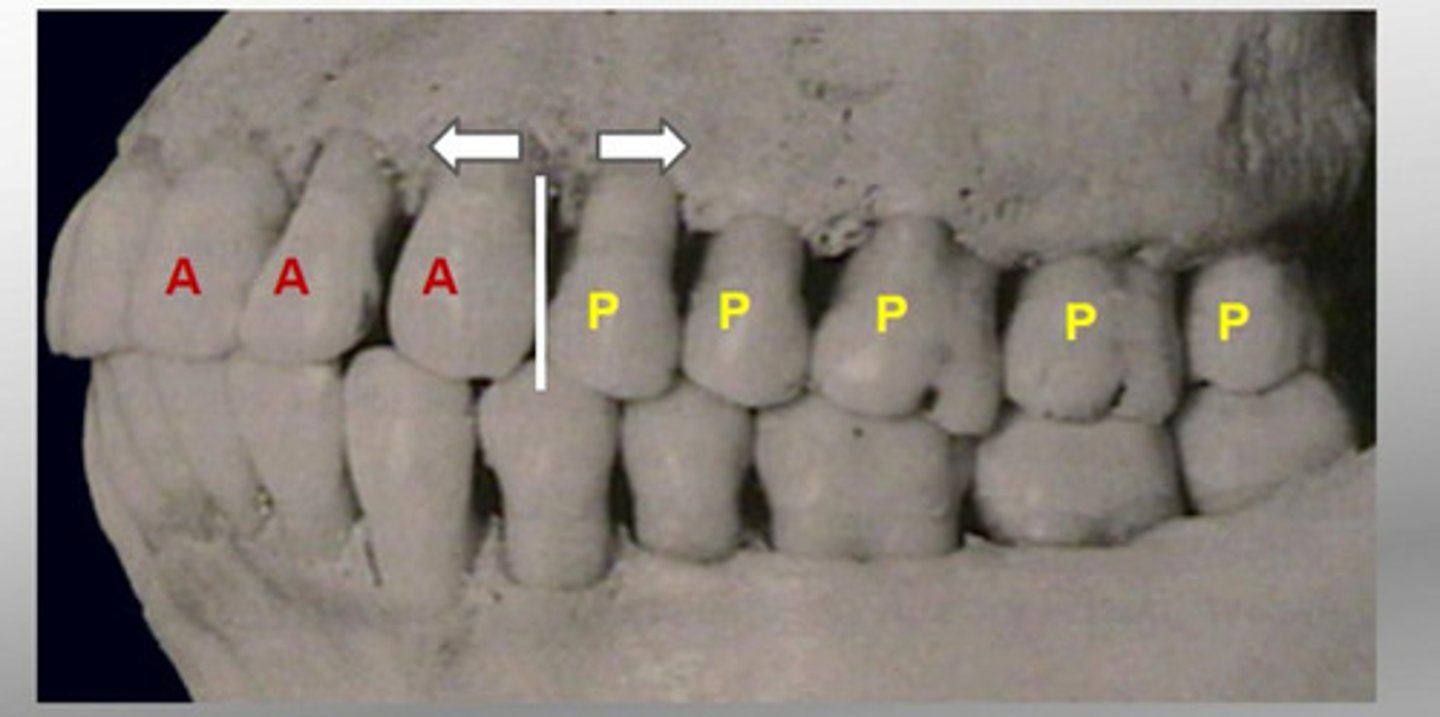
Universal Numbering System (permanent)
Uses 1-32
- Starts with 1 for upper right 3rd molar going around to 16 left upper left
- Dropping down to 17 lower left third molar to 32 lower right
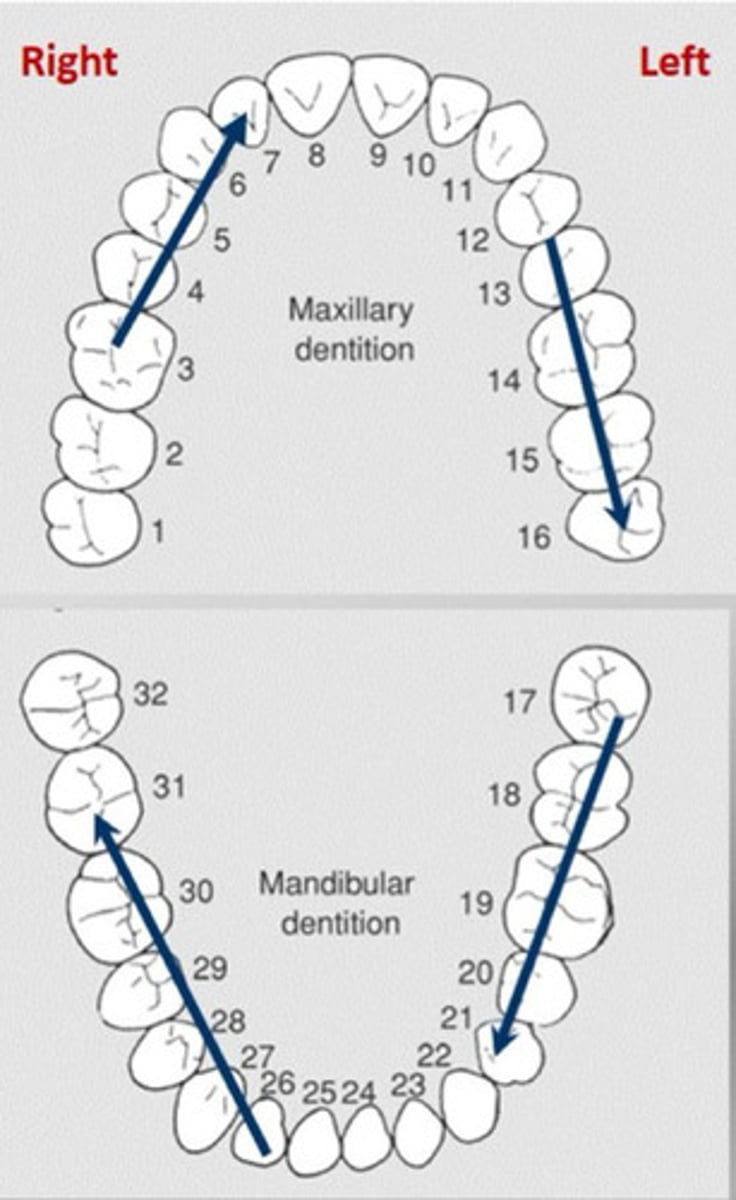
Universal Numbering System (primary)
Uses letters A-T
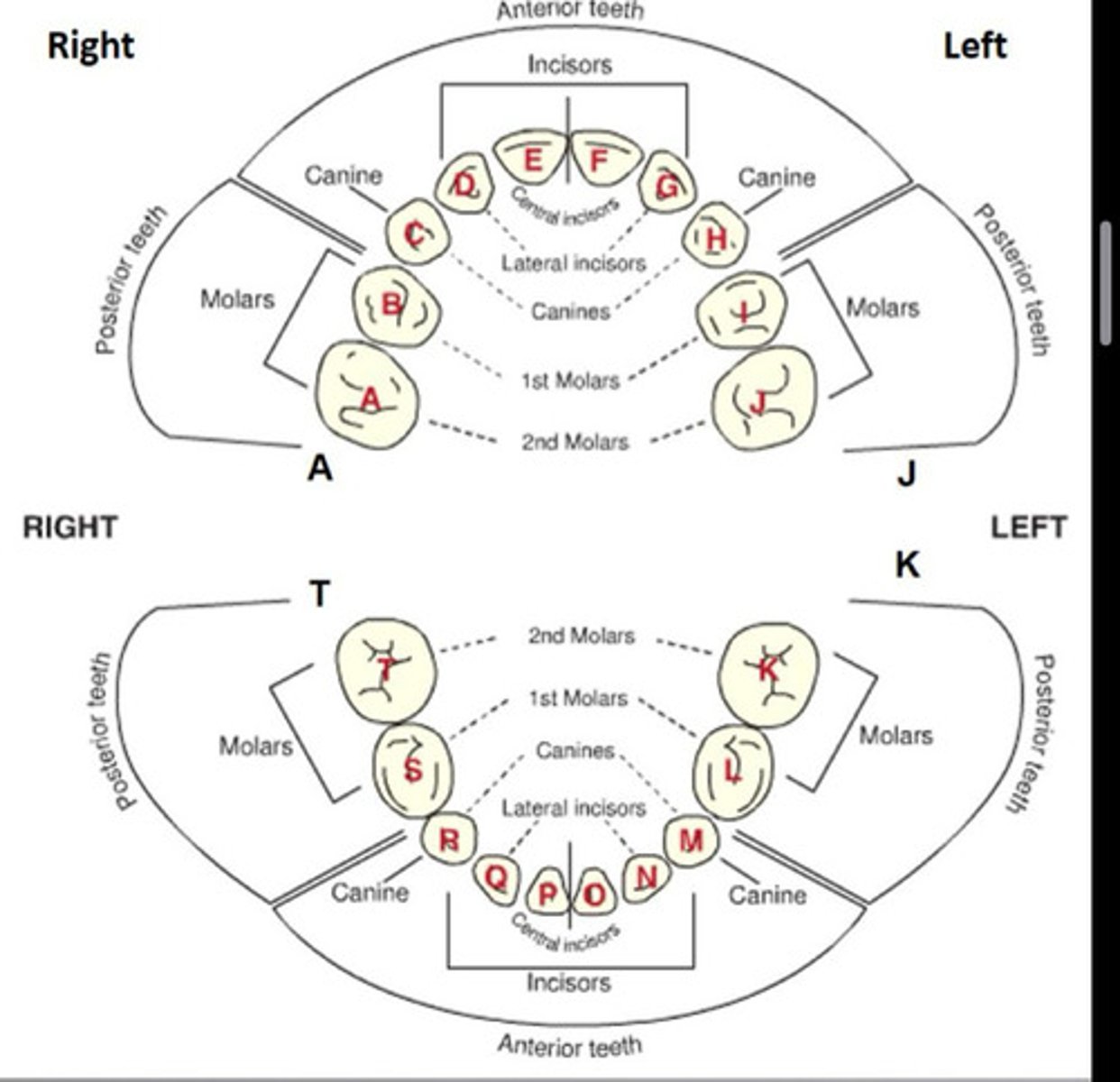
Palmer Notation System (permanent)
This numbering system assigns a number and bracket to each tooth. (Commonly used for charting in orthodontics)
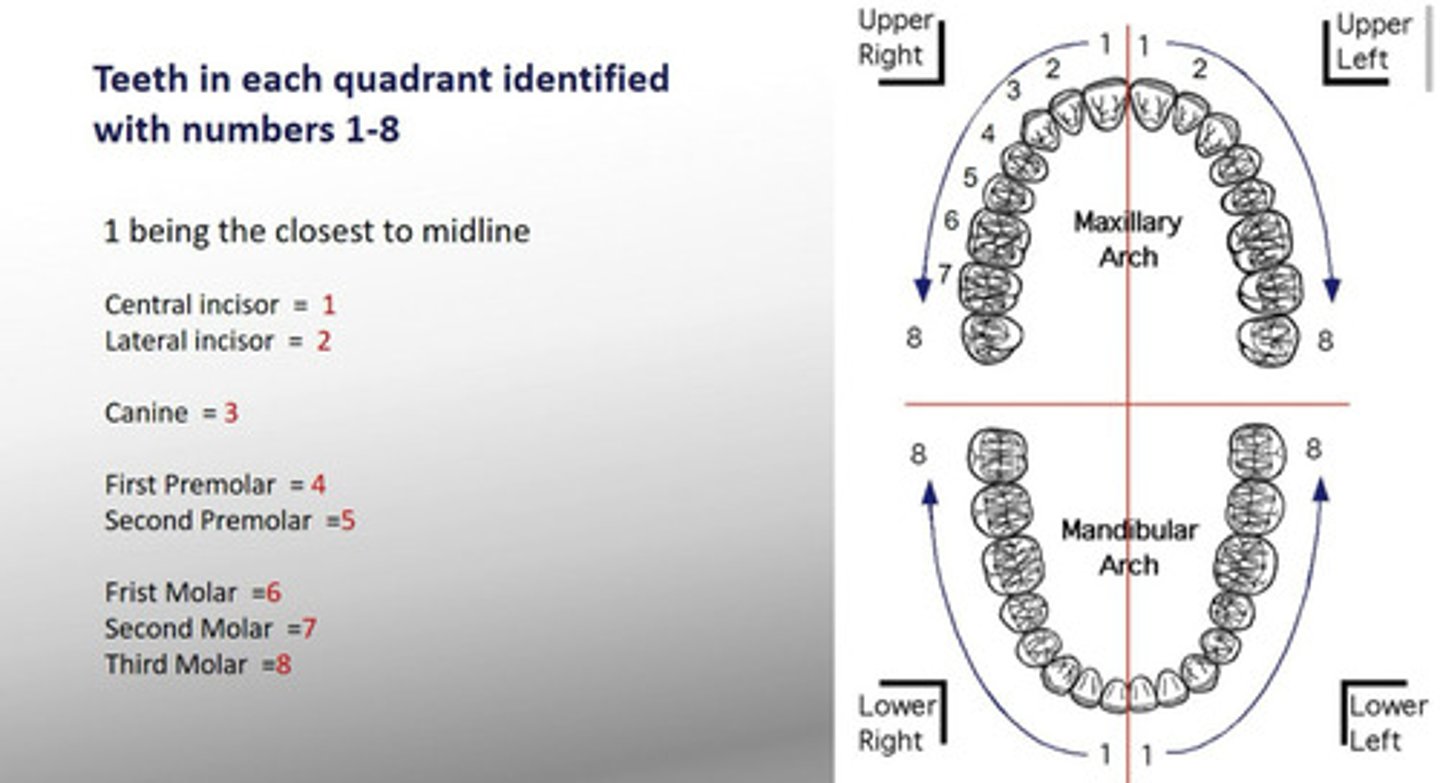
Palmer Notation System (primary)
uses letters A-E
Central incisors have the Letter A
Lateral incisors have the Letter B
Canines have the Letter C
First premolars have the Letter D
Second premolars have the letter E
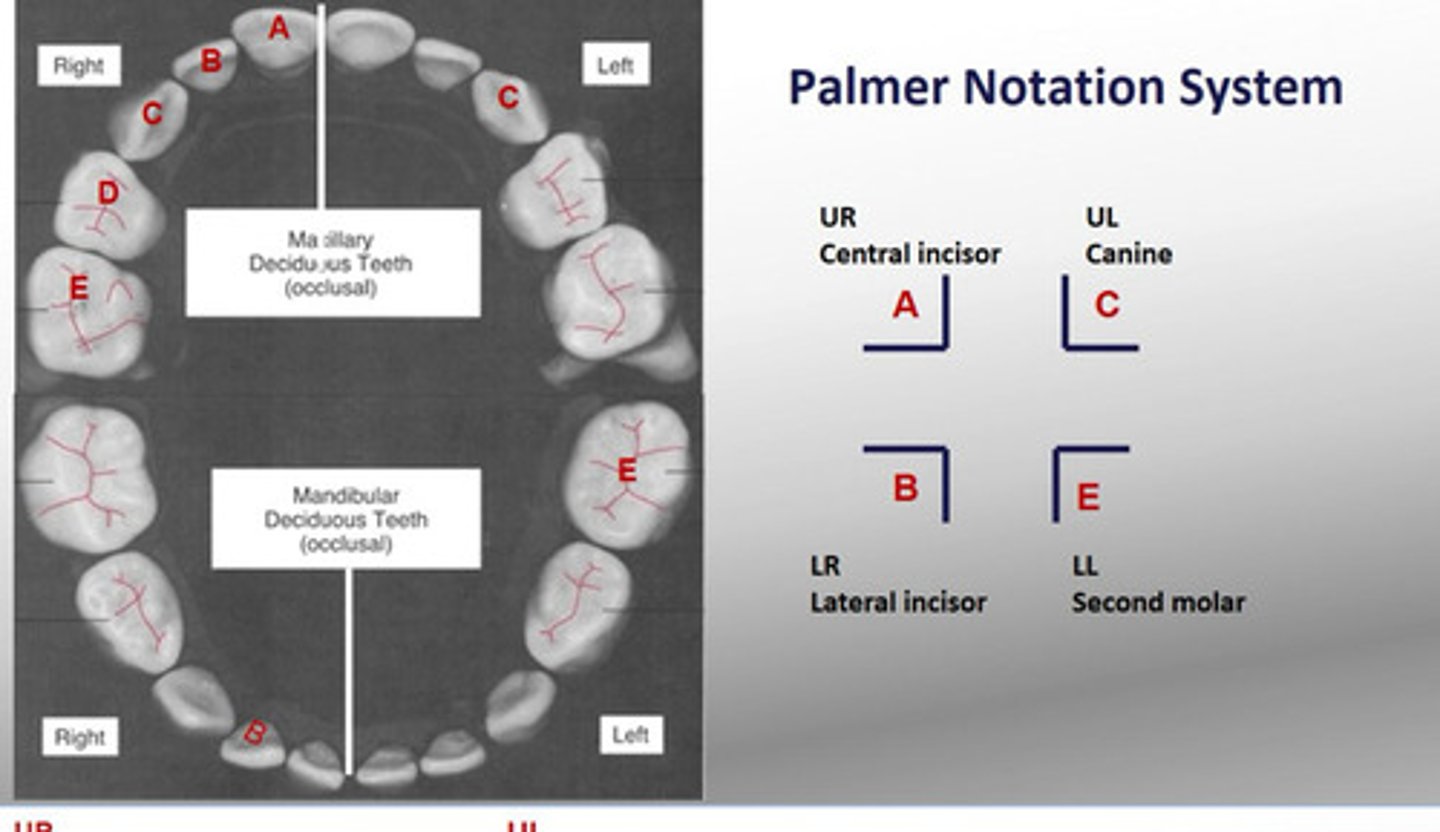
International Numbering System (permanent)
Uses two digits for each tooth
First digit represents arch/quadrant side
Second refers to tooth position 1-8 from midline
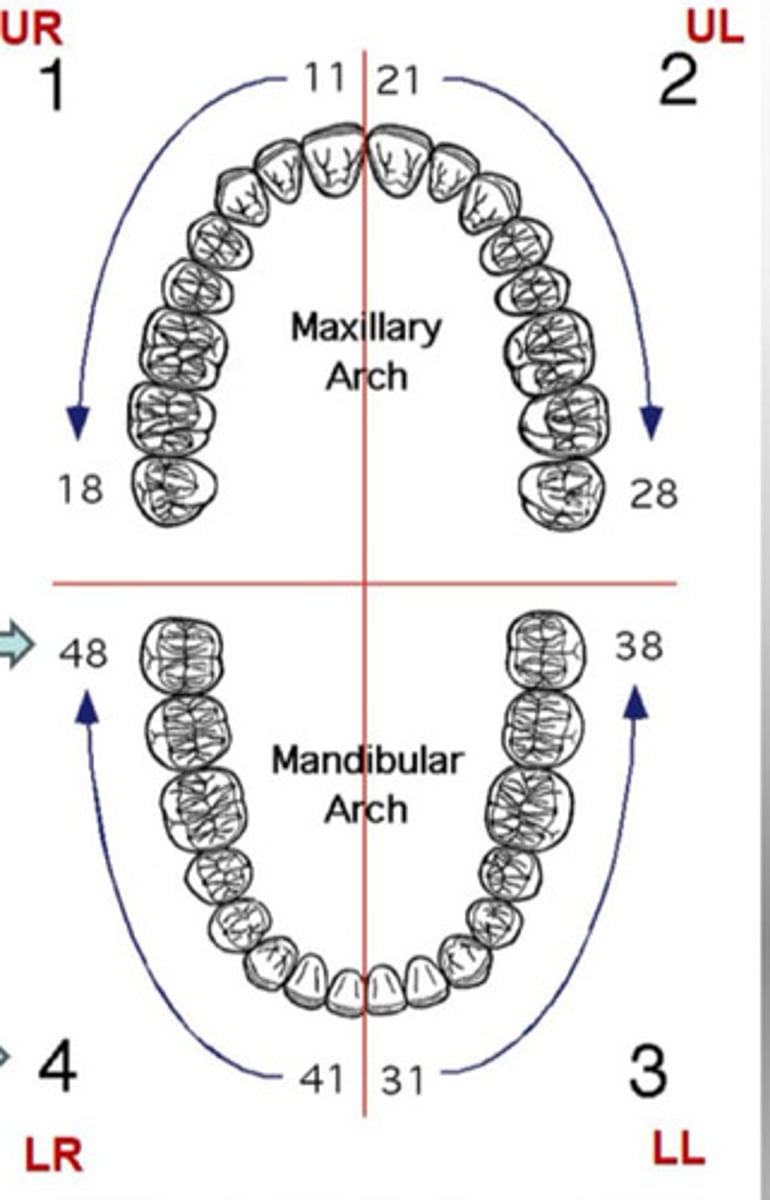
International Numbering System (primary)
Uses numbers 1-5 from midline
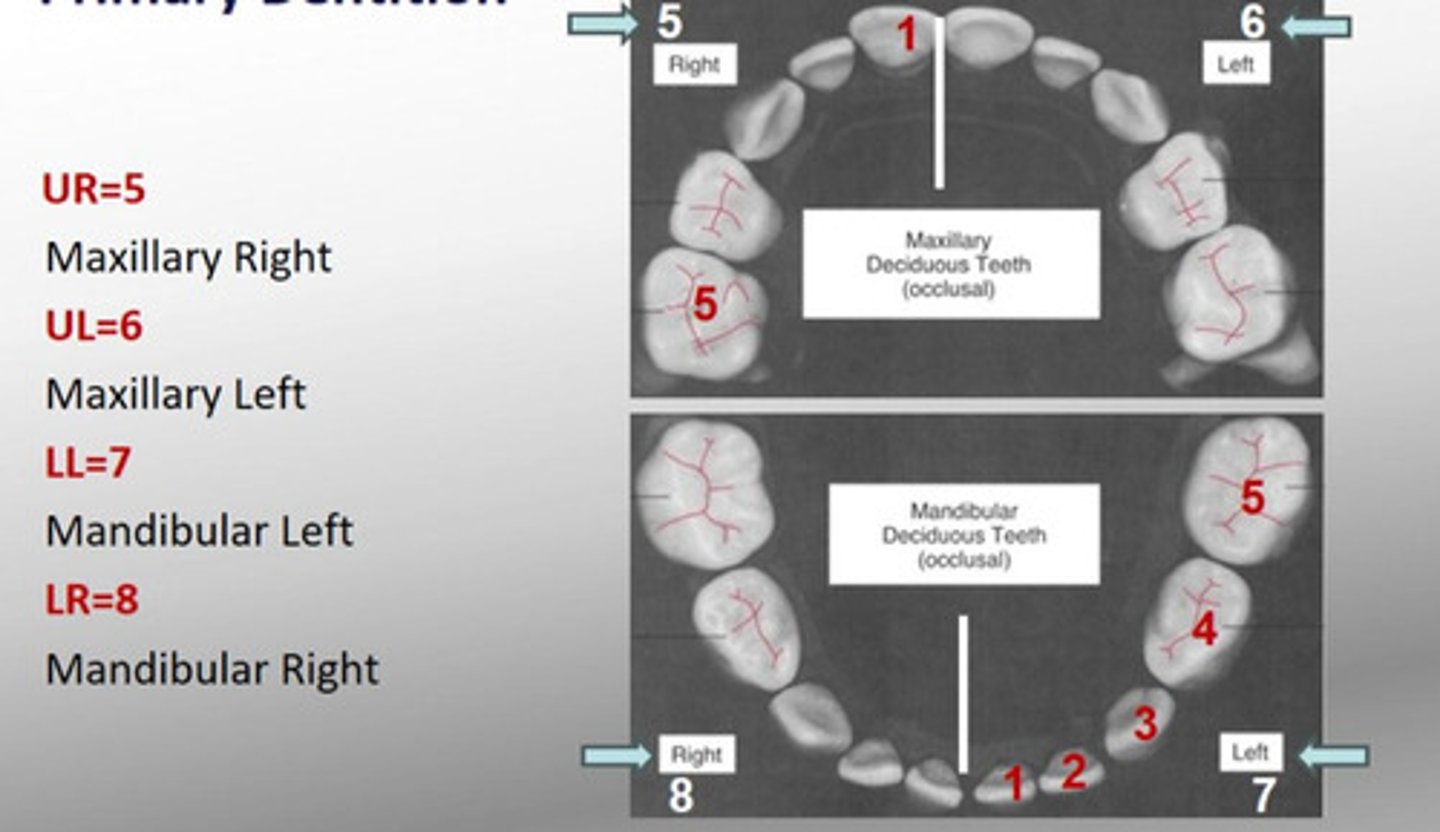
Set traits
Primary dentition Set and Permanent Dentition Set
Arch traits
differences between maxillary (upper) and mandibular (lower) jaw
Class traits
distinguish between the four categories of teeth (incisors, canines, premolars, and molars)
Type traits
differentiate teeth within one class (i.e. differences between central and lateral incisors, or between 1/2 premolars, or b/t 1/2/3 molars
Enamel
Outer surface of crown, hardest substance in body, white shiny surface
Ectoderm
Enamel develops from
Ameloblast cells
Enamel is a product of
Highly calcified and inorganic
Enamel is

Dentine
In the crown and root that surrounds the pulp, yellowish and not visible
Mesoderm
Dentine develops from
Odontoblast cells
Dentine is a product of
Calcified and inorganic
Dentine is
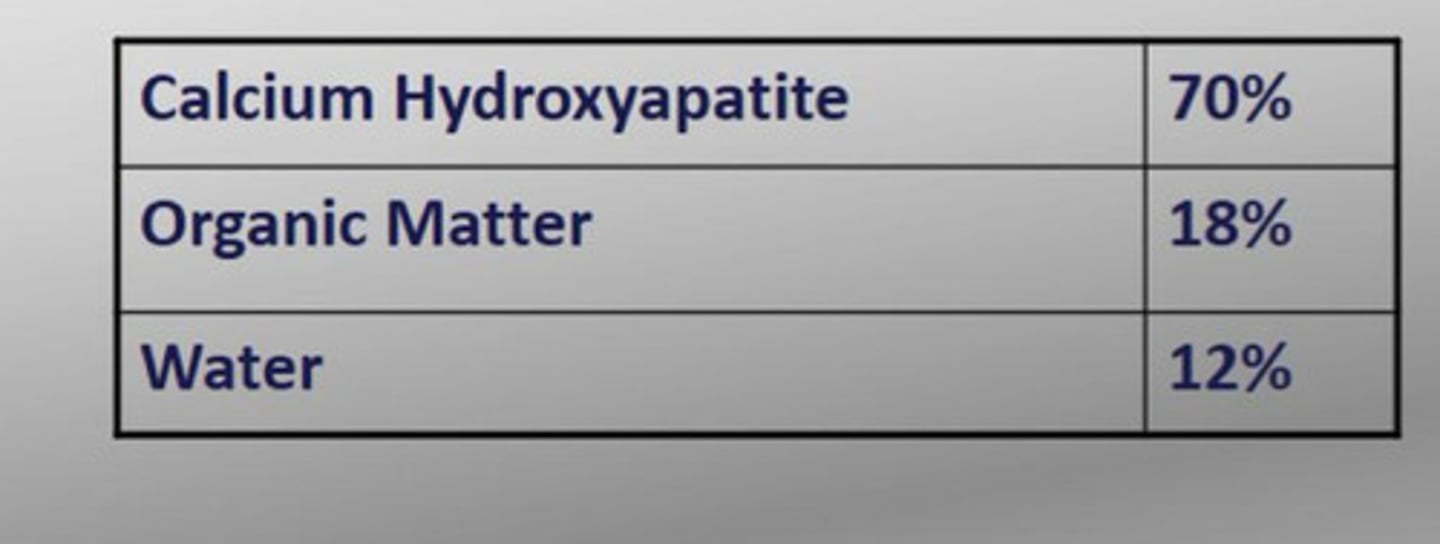
Cementum
External layer of the anatomical root, dull yellow color, hard as bone
Mesoderm
Cementum develops from
Cementoblast cells
Cementum is a product of
Calcified and inorganic
Cementum is

Pulp
Located in pulp chamber and root canal, surrounded by dentin
Not calcified and soft
Pulp is
Mesoderm
Pulp develops from
Cementoenamel Junction (CEJ)
The junction line between the anatomical crown from root
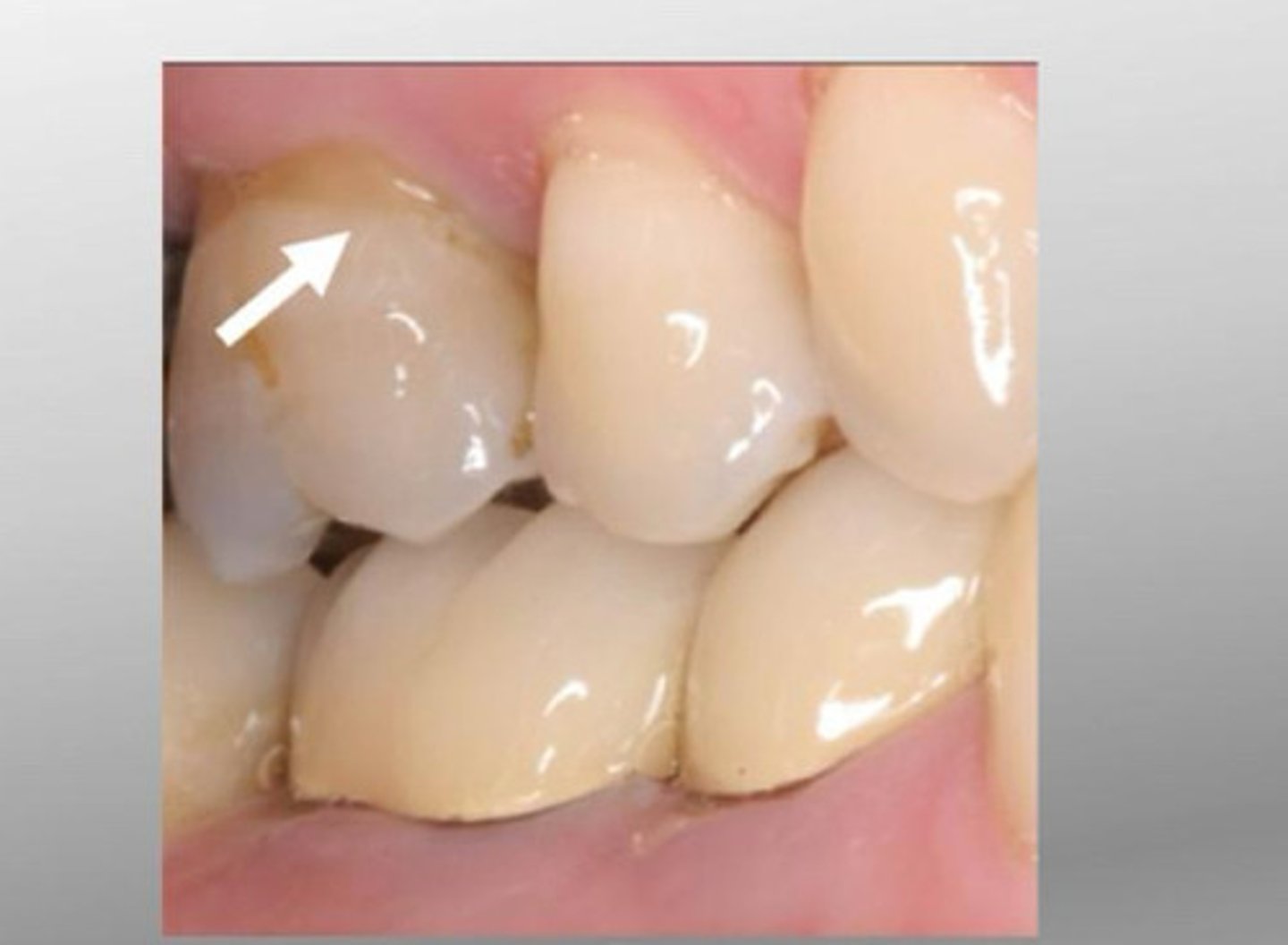
Dentinoenamel Junction (DEJ)
Inner surface of enamel cap visible in cross section or badly worn teeth
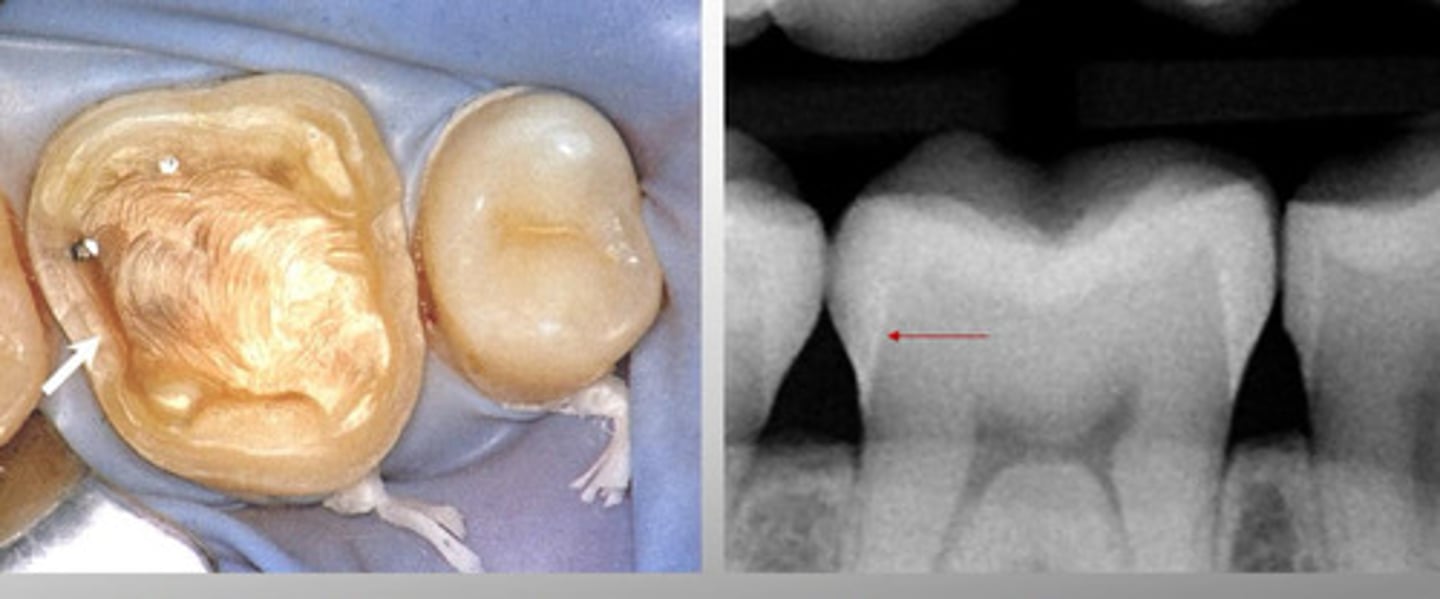
Cementodentinal Junction (CDJ)
Inner surface of cementum lining the root visible in cross section or badly worn teeth
Anatomic crown
Portion of the tooth that is covered with enamel

Facial surface
Surface next to the face used in both anterior and posterior teeth
Clinical crown
Visible part of tooth
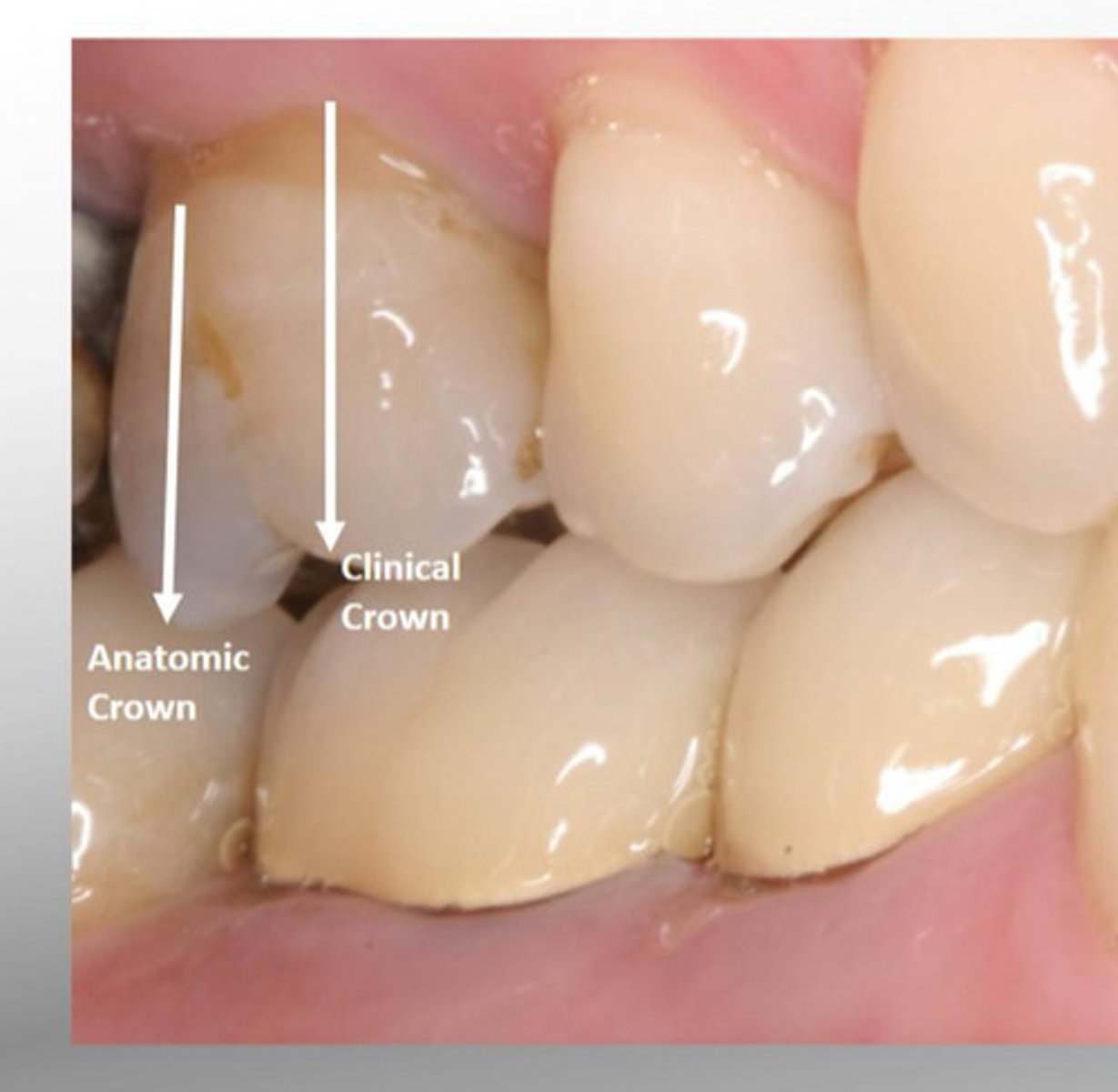
Clinical root
Not visible in mouth
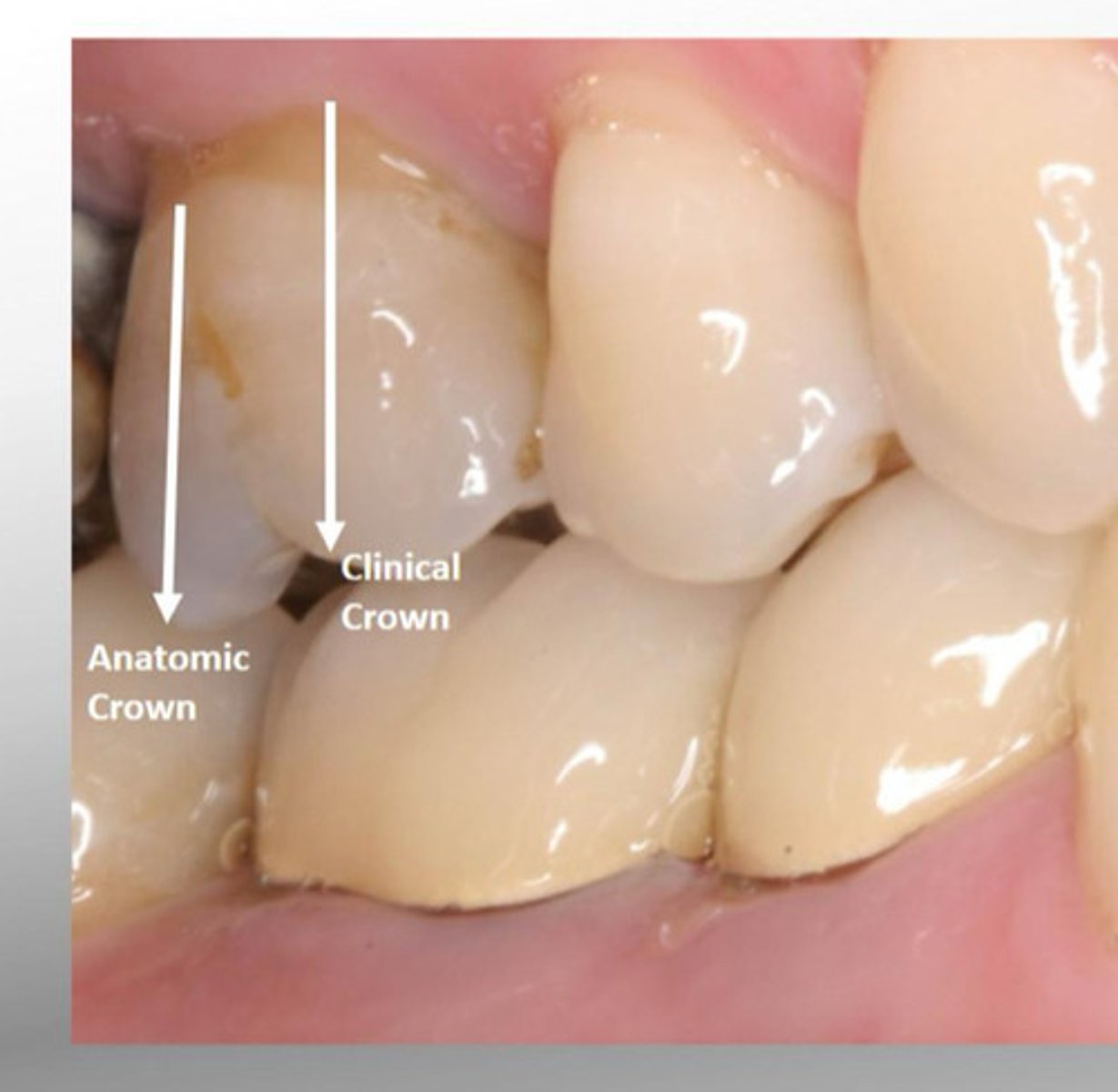
Anatomic root
part of the tooth covered by cementum
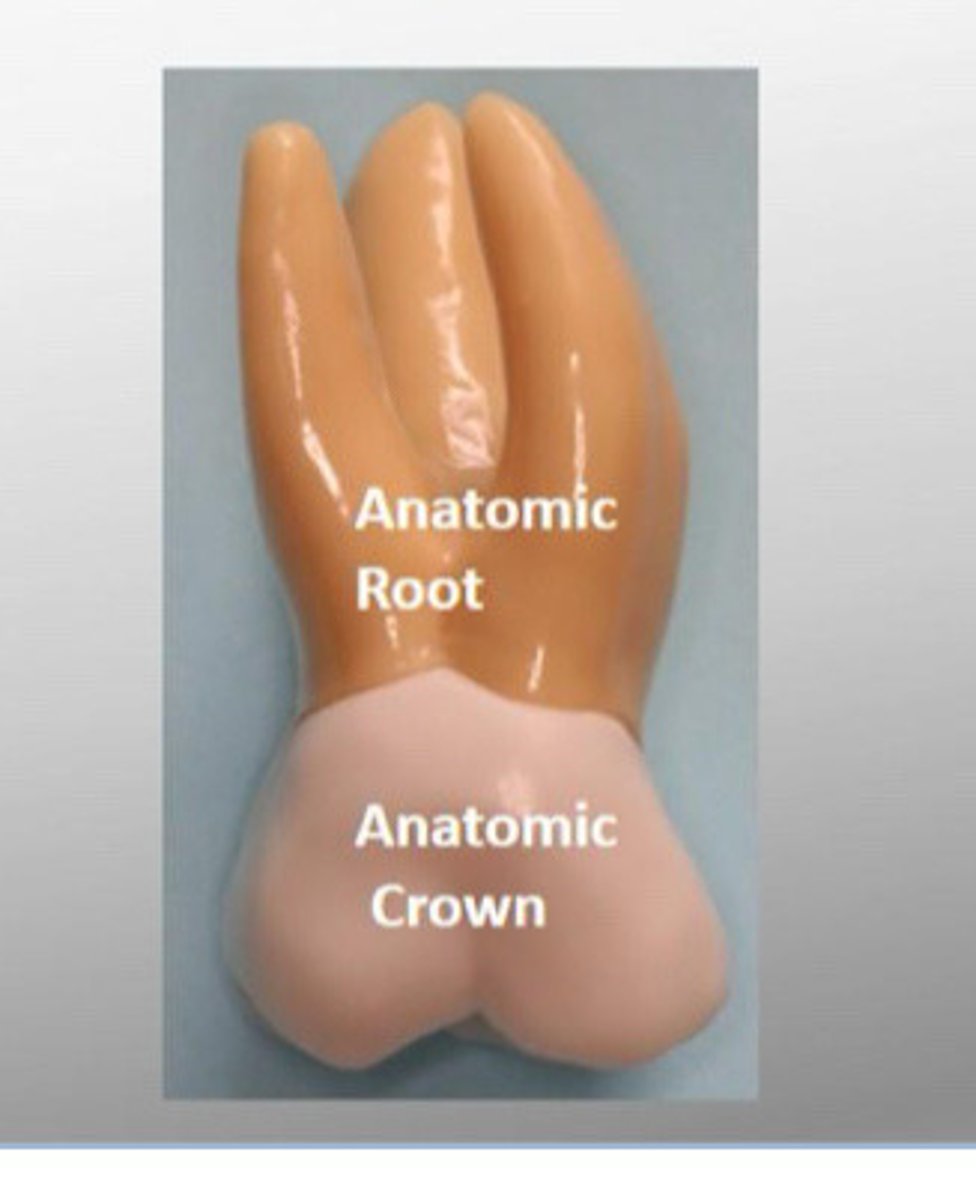
Labial surface
anterior teeth, closest to the lips
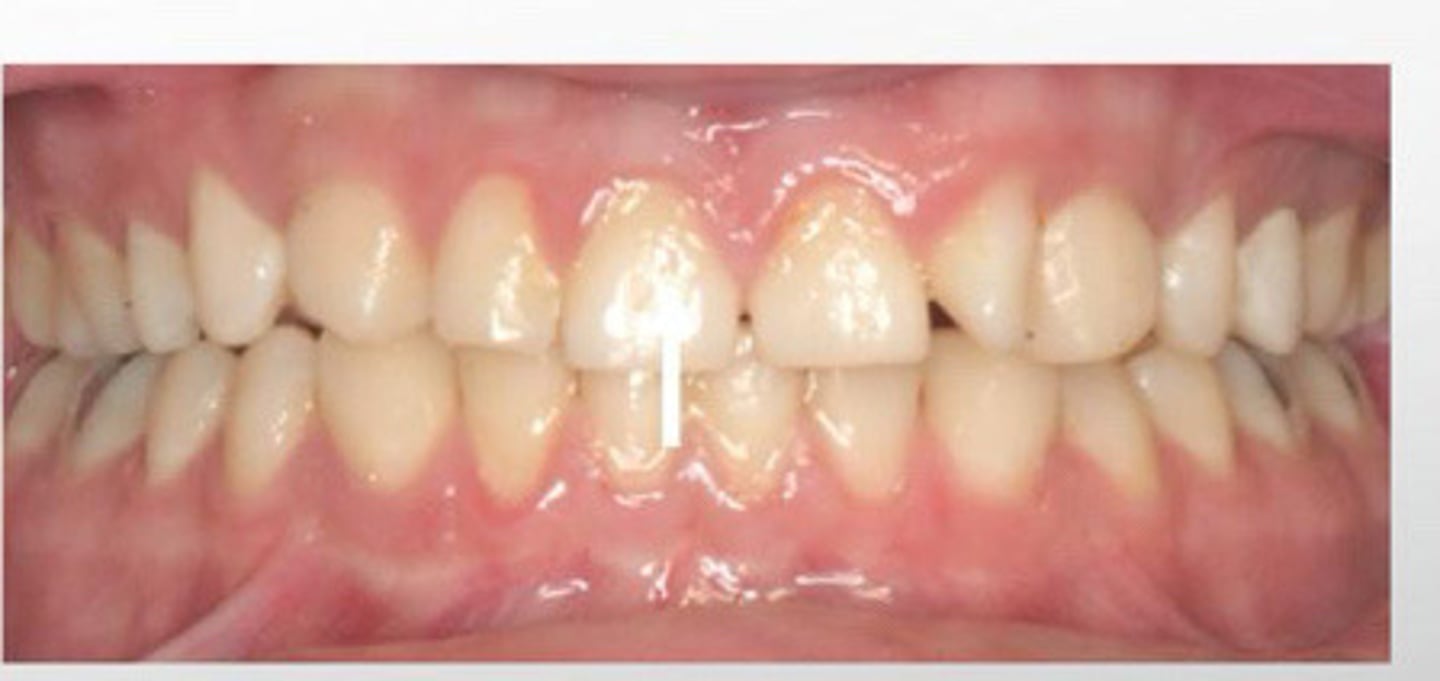
Buccal surface
Posterior teeth, closest near the teeth
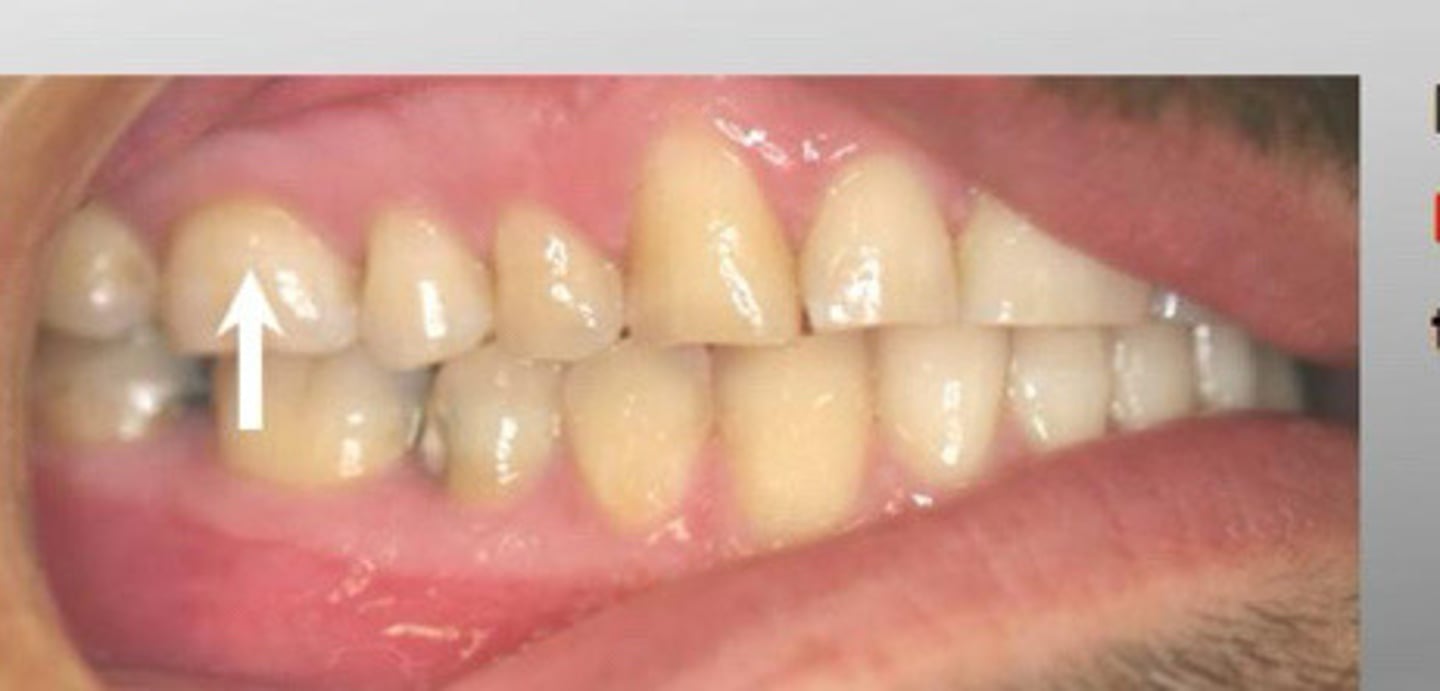
Lingual surface
Surface of mandibular and maxillary teeth closest to the tongue
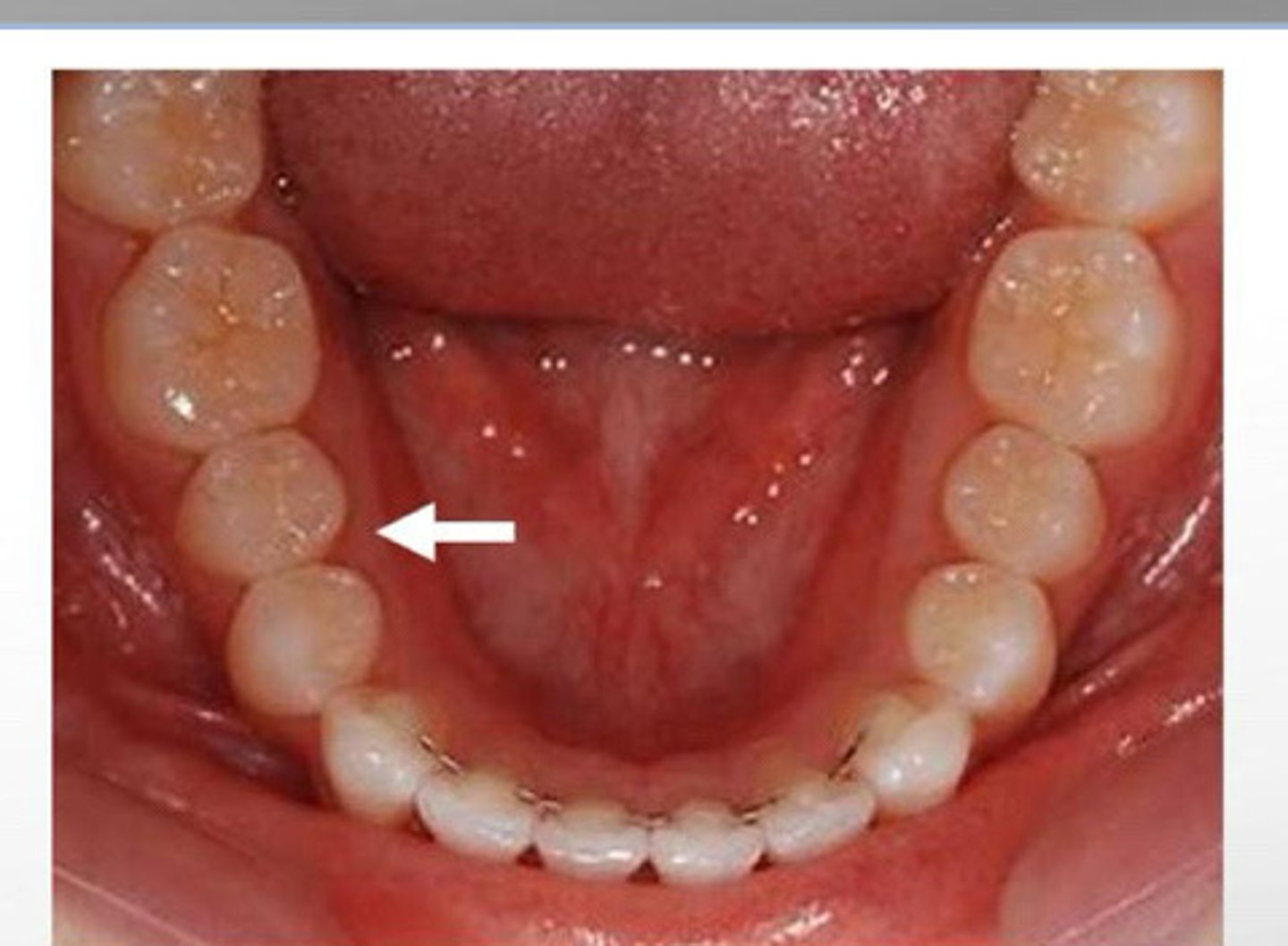
Palatial surface
Surface of maxillary teeth nearest to the palate
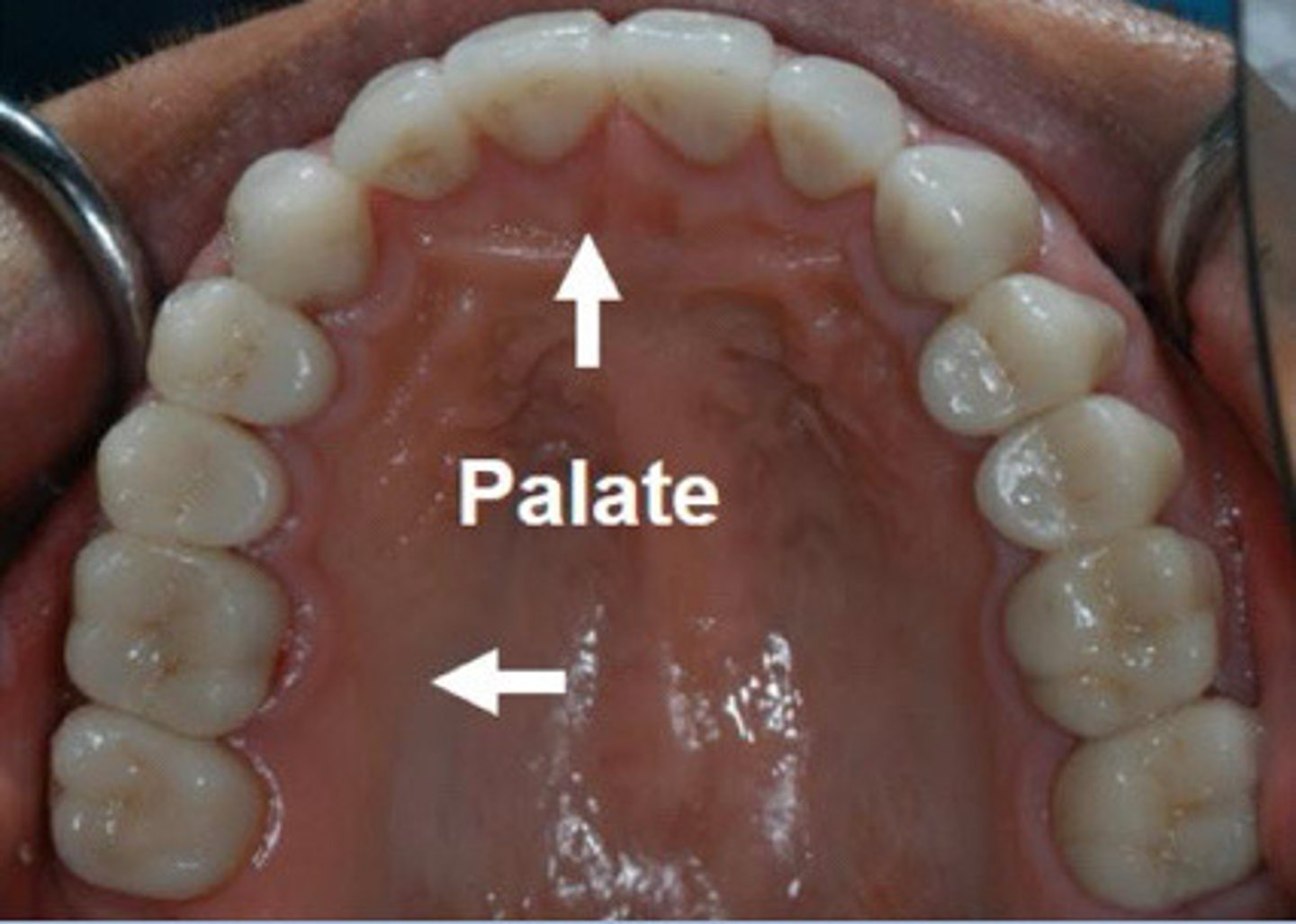
Proximal surface
The surfaces next to each other when teeth are adjacent in the arch
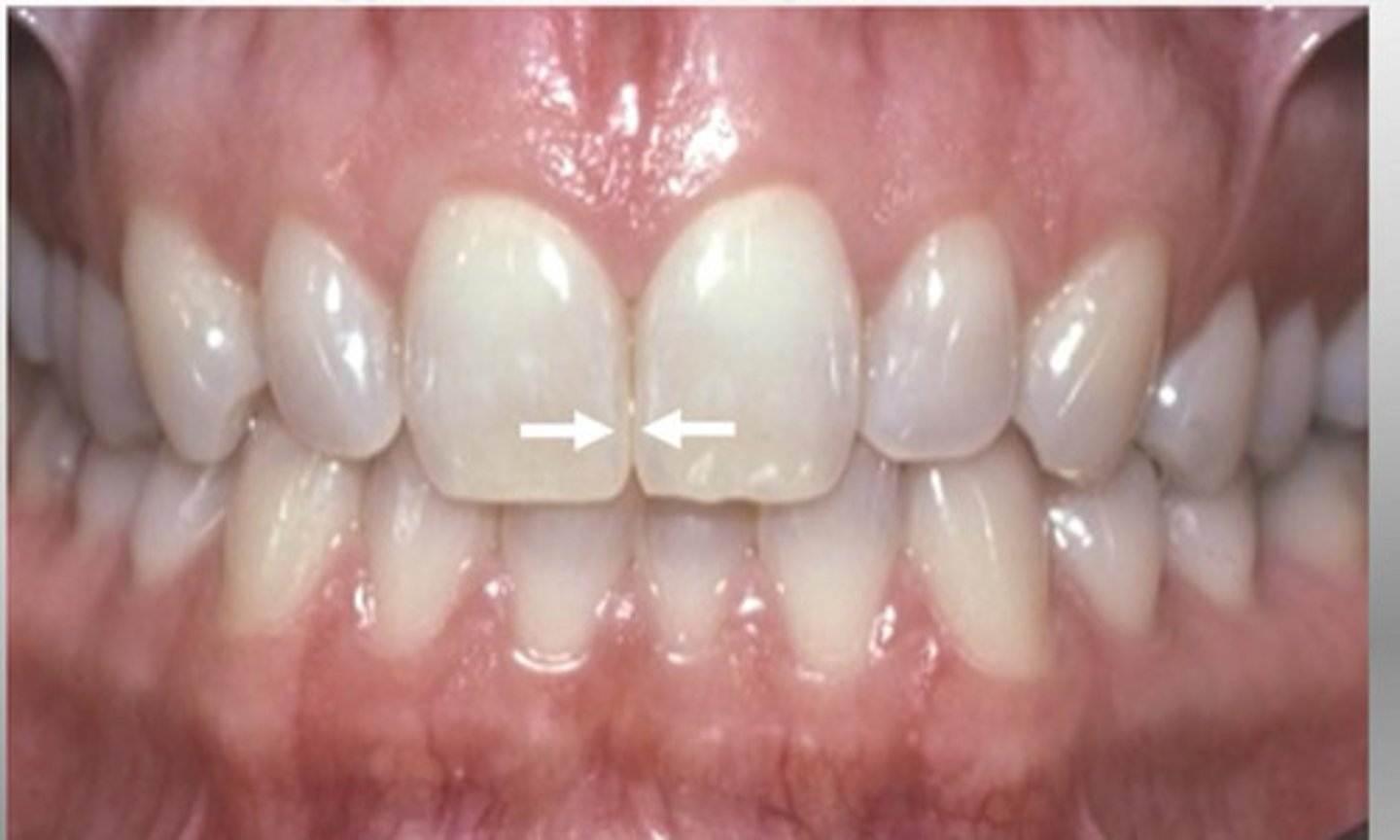
Mesial surface
Is the surface of the tooth nearest to the midline of dental arch
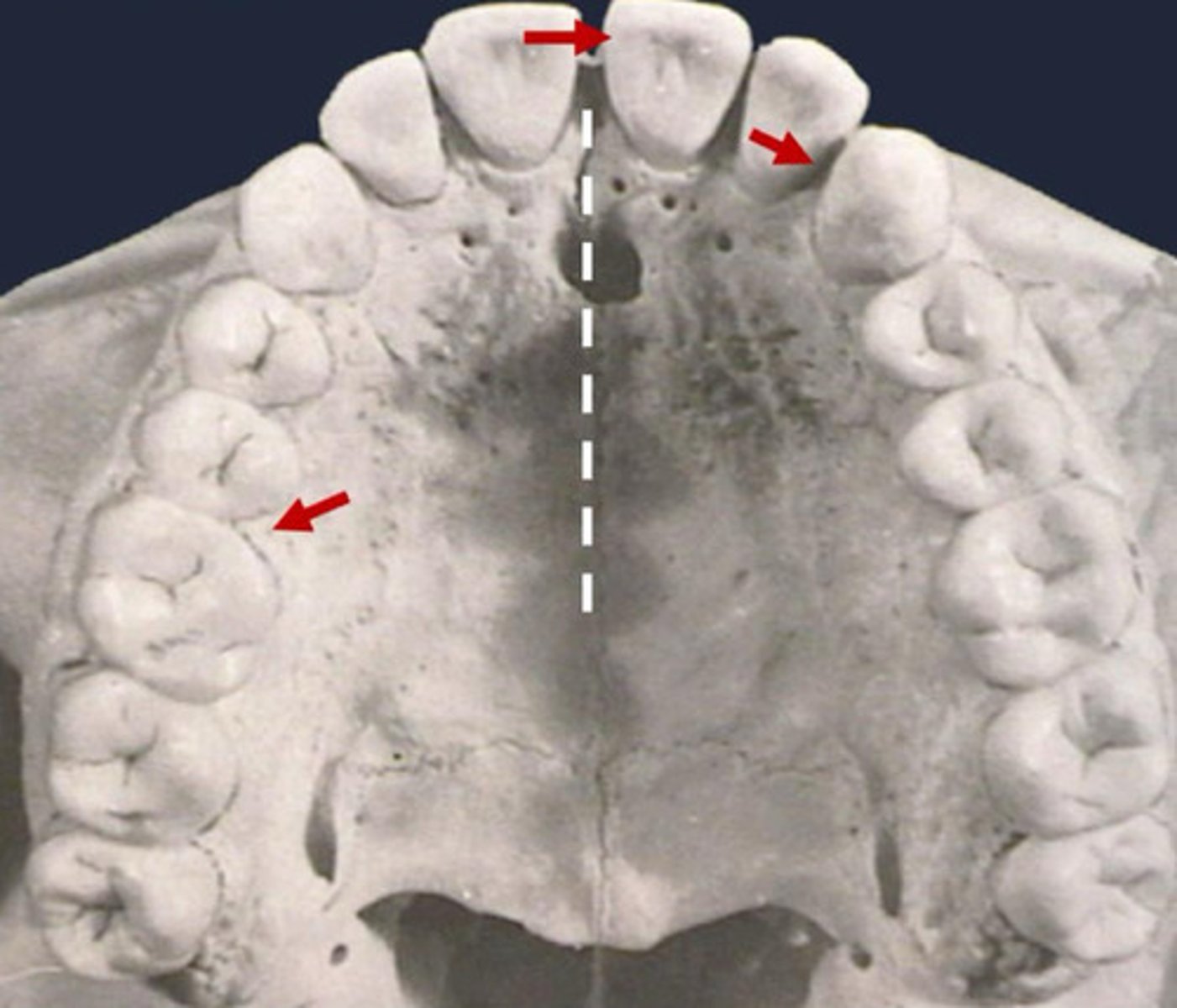
Distal surface
Is the surface of the tooth farthest to the midline of dental arch
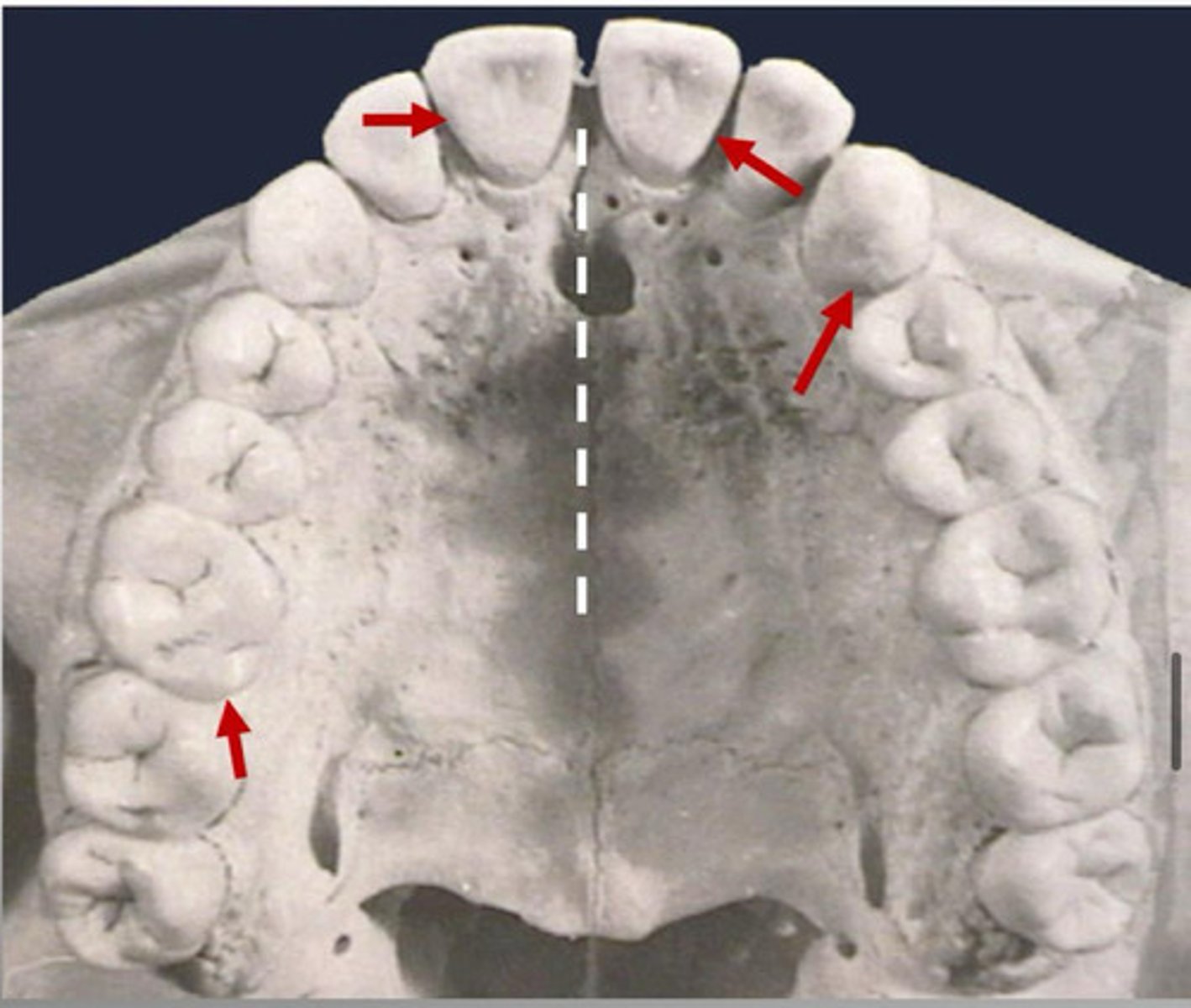
Occlusal surface
Chewing surface of posterior teeth found within cusp and marginal ridges
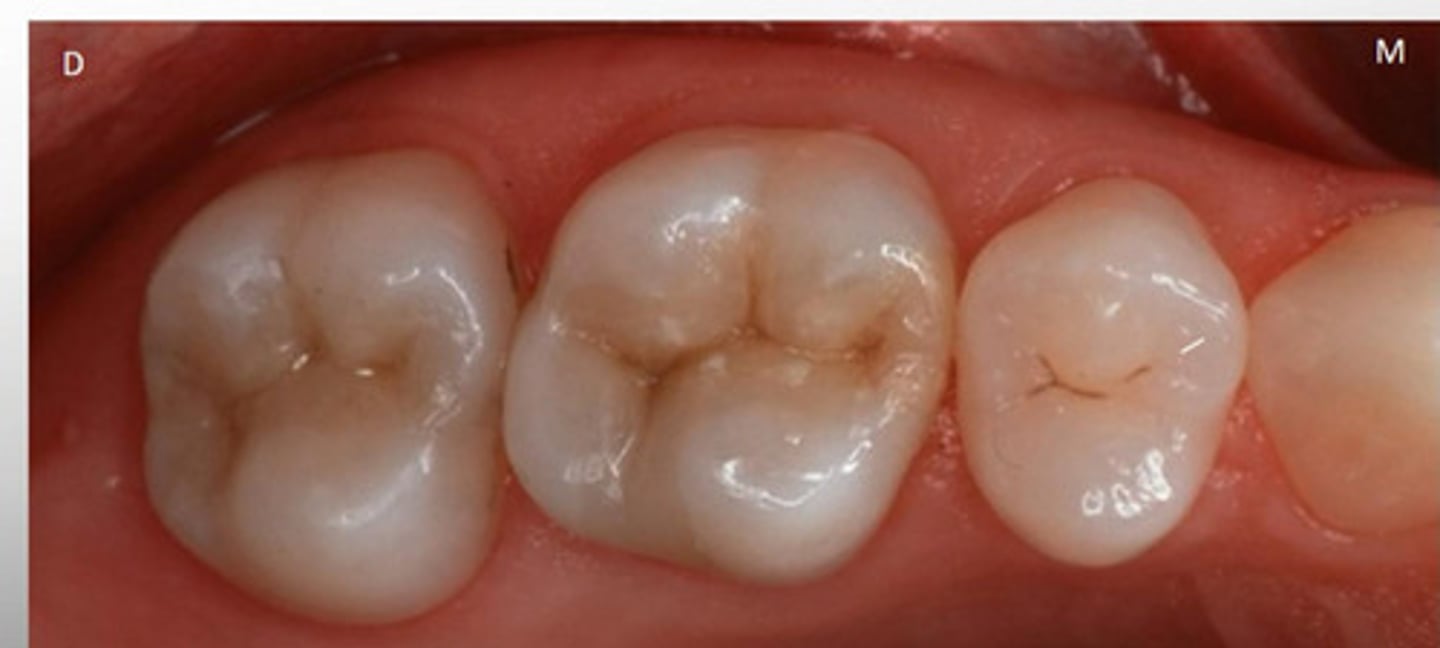
Cusp tip
Point, or peak on the chewing surface of premolar or molar tooth
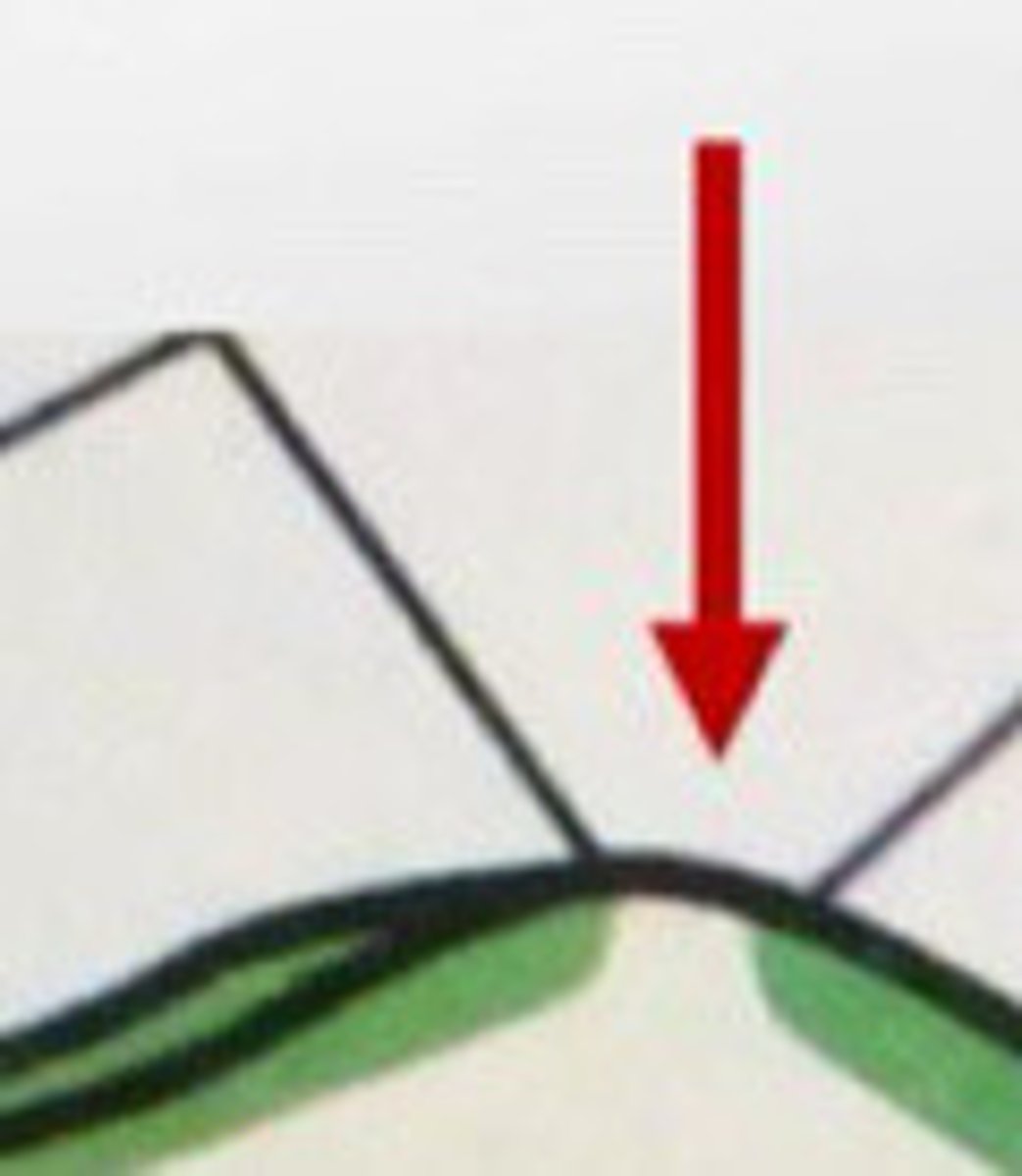
Cusp ridges
Slopes are the inclined surfaces that form an angle at cusp tip
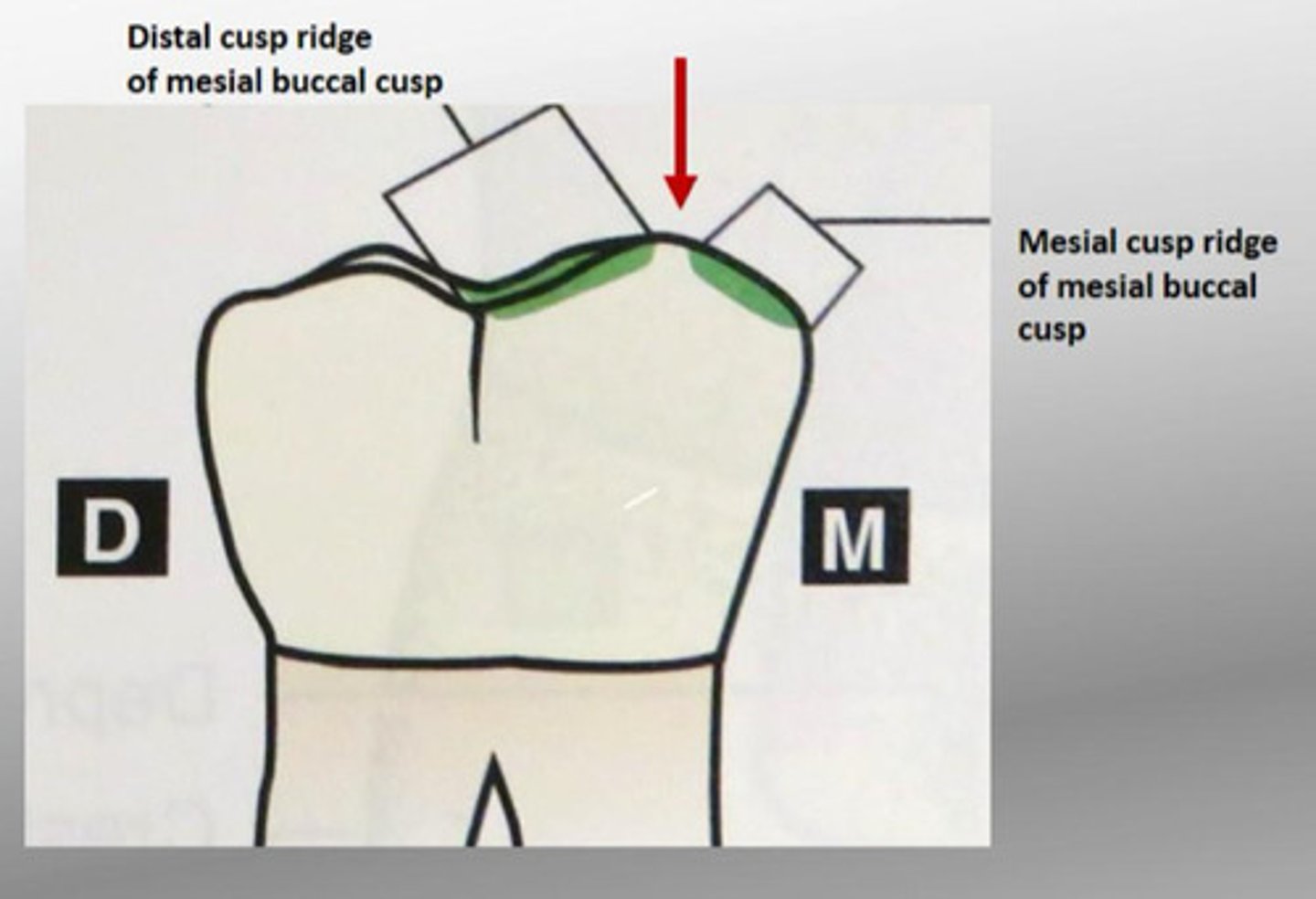
Incisal Ridge (or edge)
cutting surface of anterior teeth
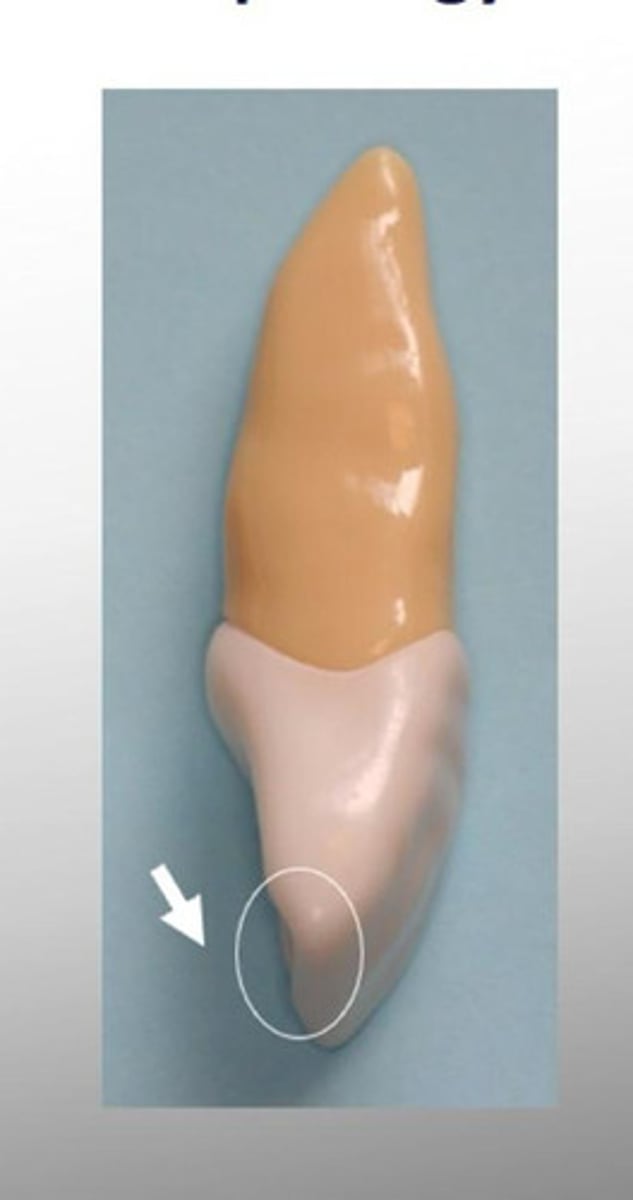
Cingulum
Enlargement or bulge on lingual of all anterior teeth
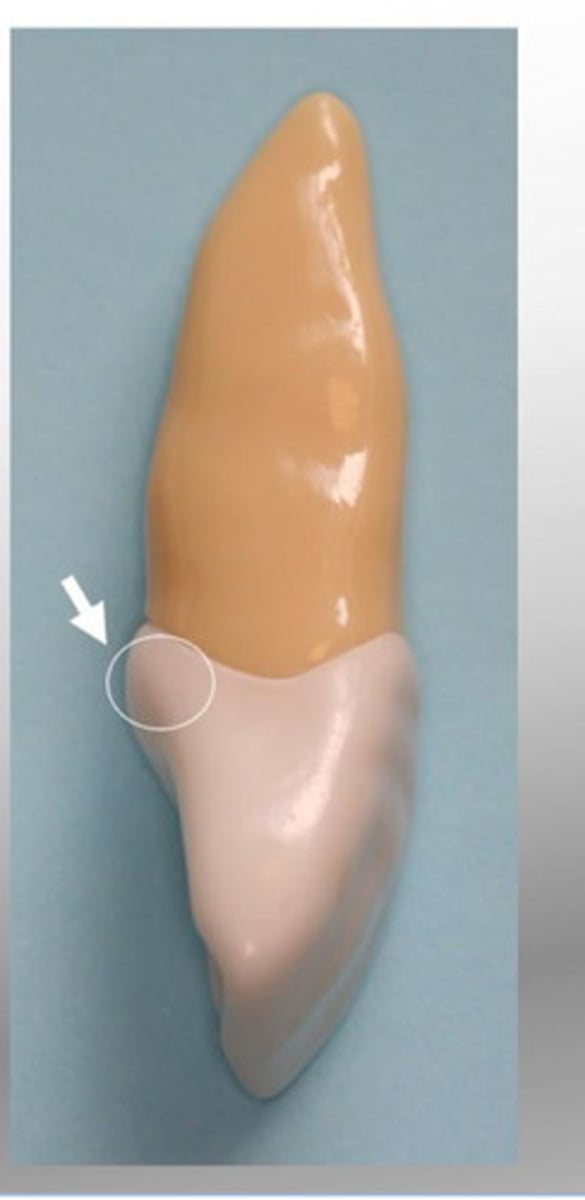
ML cusp
Although most only have one, ____ have two triangular ridges
Labial ridge
A ridge running cervicoincisally in approximately the center of the labial surface of the canines.
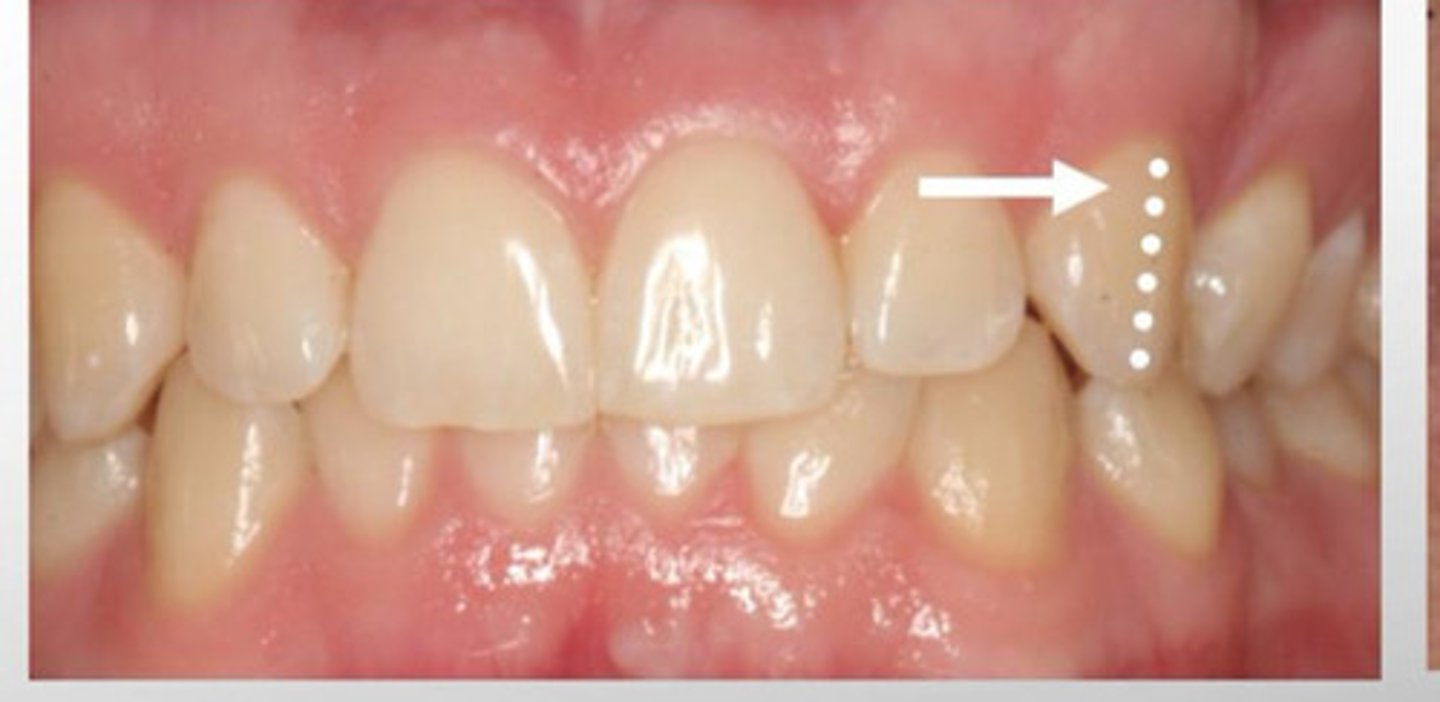
Buccal ridge
a ridge running cervico-occlusally in approximately the center of the buccal surface of premolars
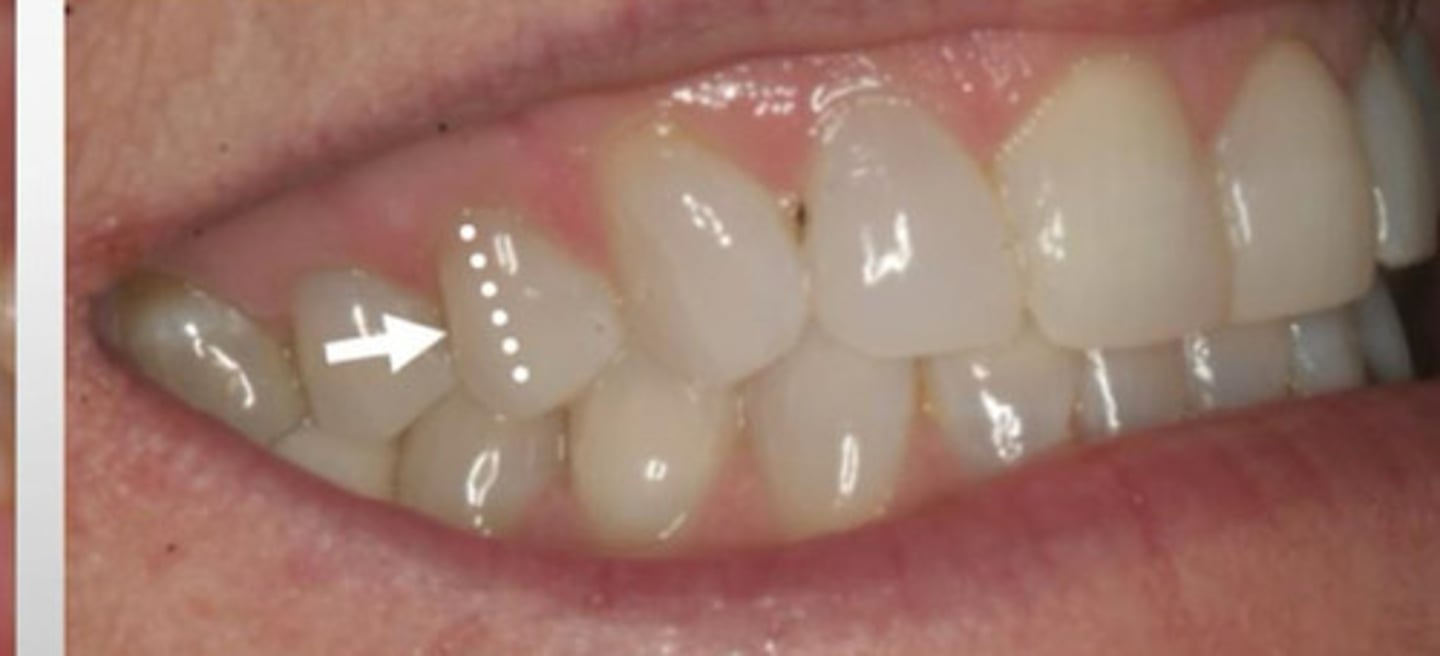
Cervical ridge
Ridge running mesiodistally (horizontal) in cervical one-third of buccal crown surface on primary dentition and permanent molars
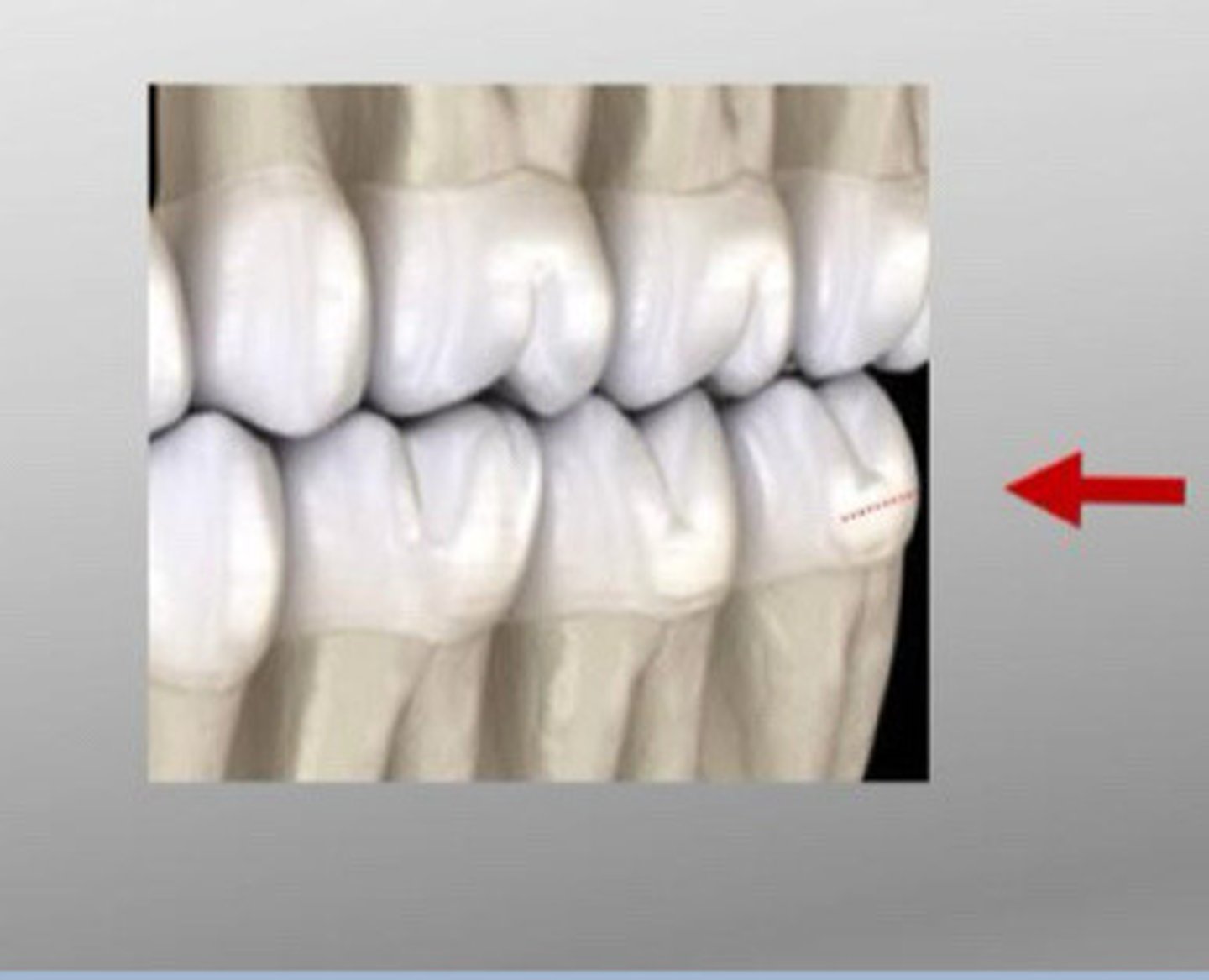
Marginal ridge (incisor/canine)
On incisor and canine teeth, the ridges on the mesial and distal border of the lingual surface.

Marginal ridge (posterior)
On posterior teeth these ridges are on the mesial and distal borders of the occlusal surface.
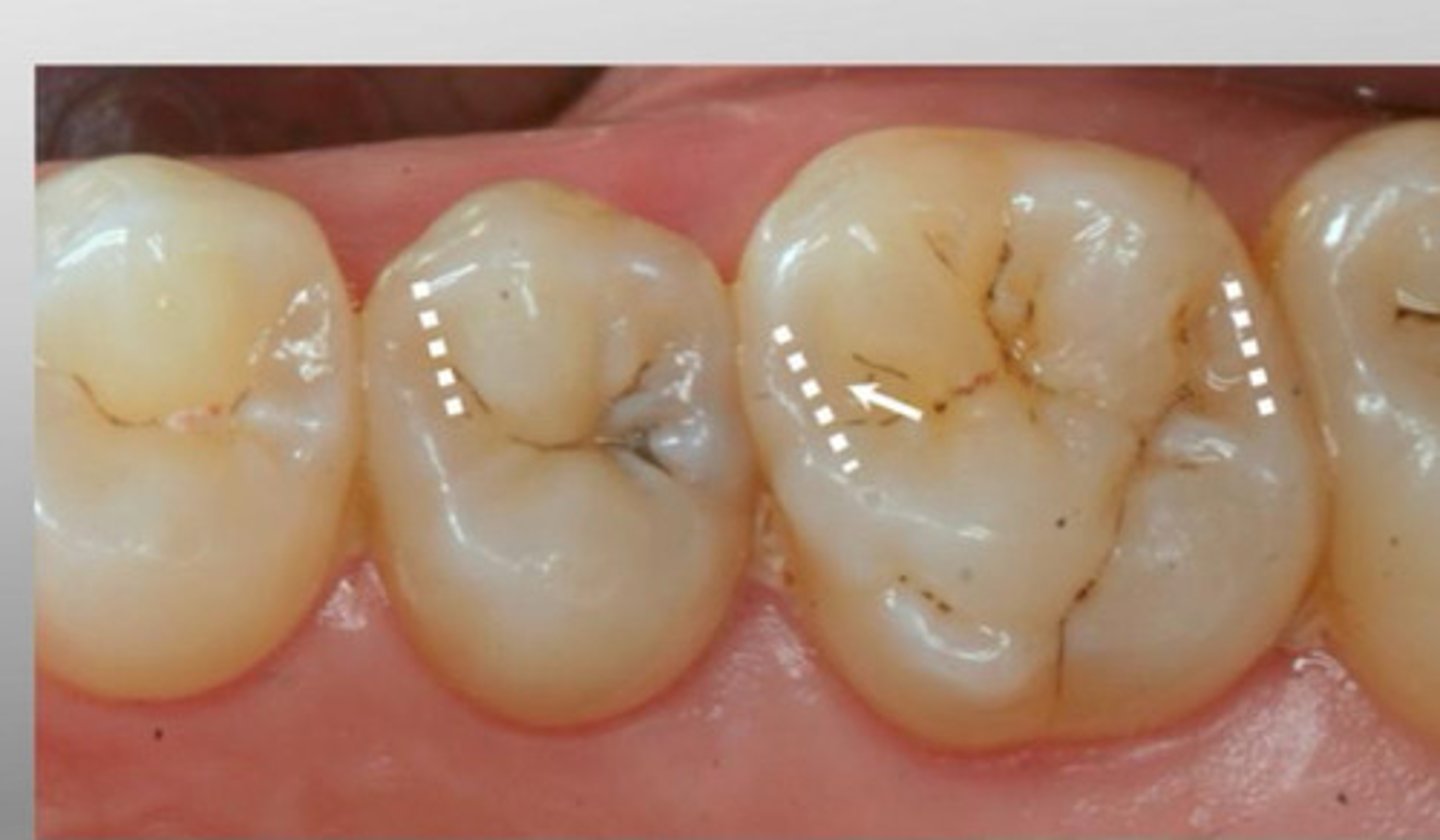
Triangular ridge
On occlusal surface of posterior teeth, the ridge from any cusp tip to the center of the occlusal surface.
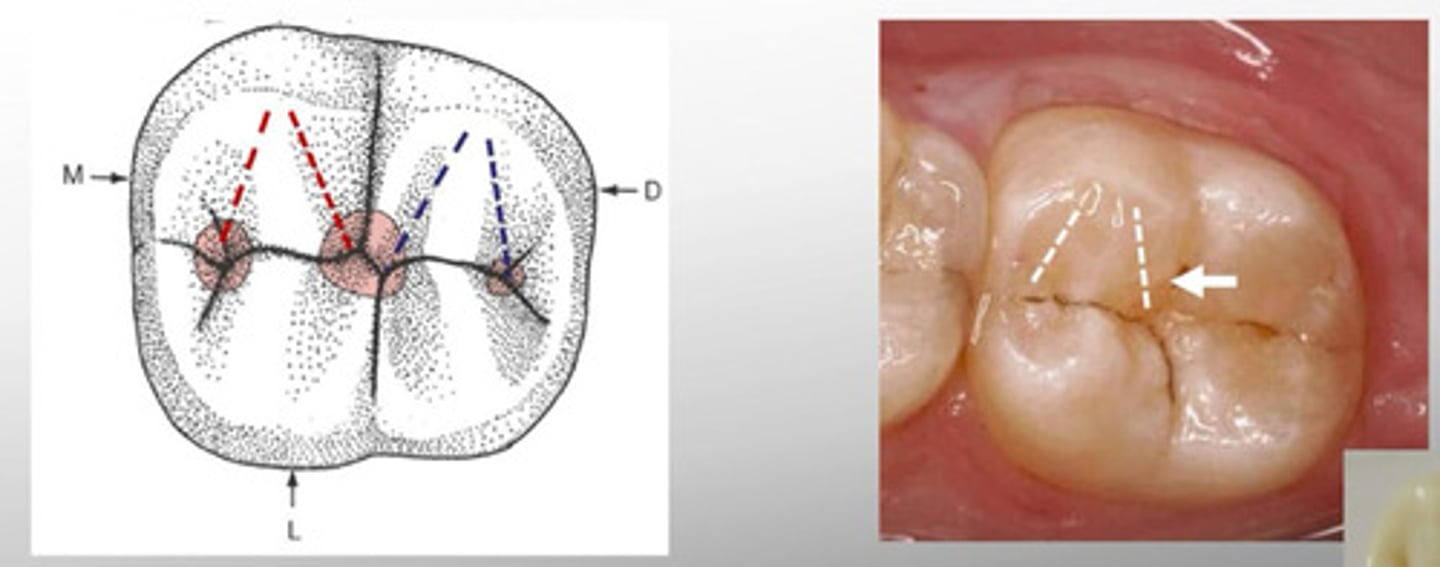
Fissure
May be found at the depth of a developmental groove
Apical 3rd
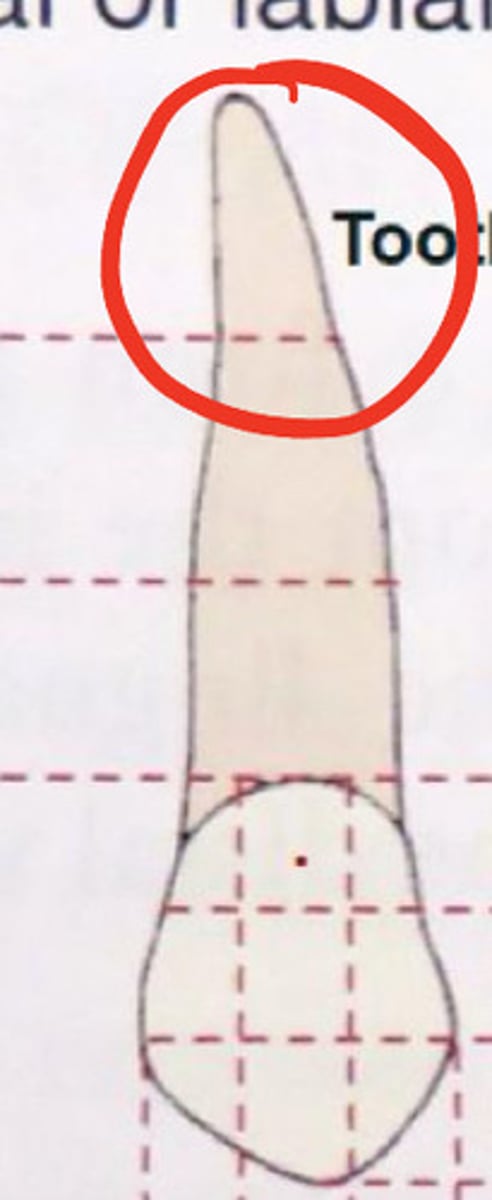
Middle 3rd
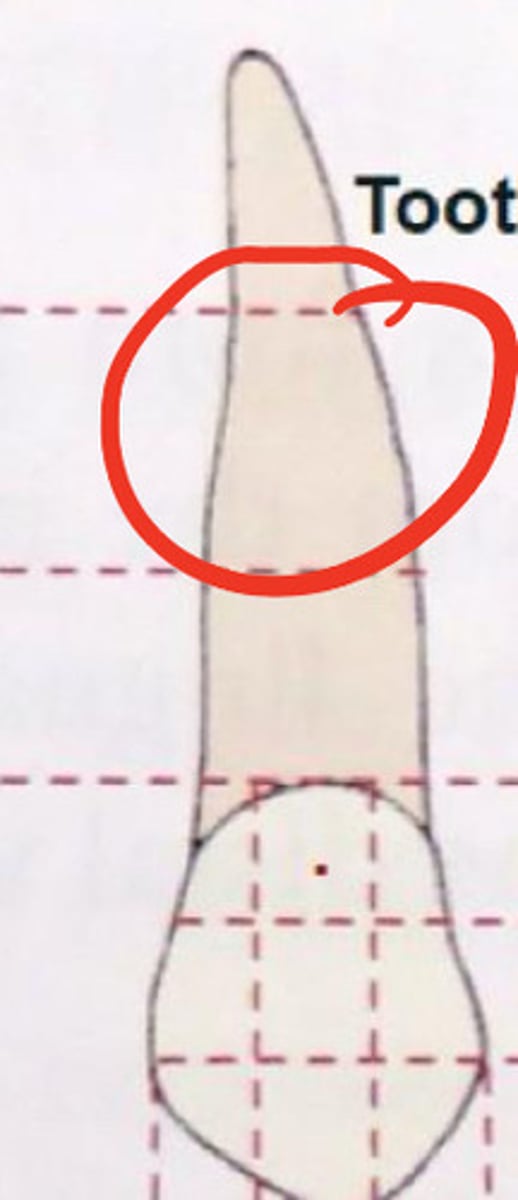
Cervical 3rd
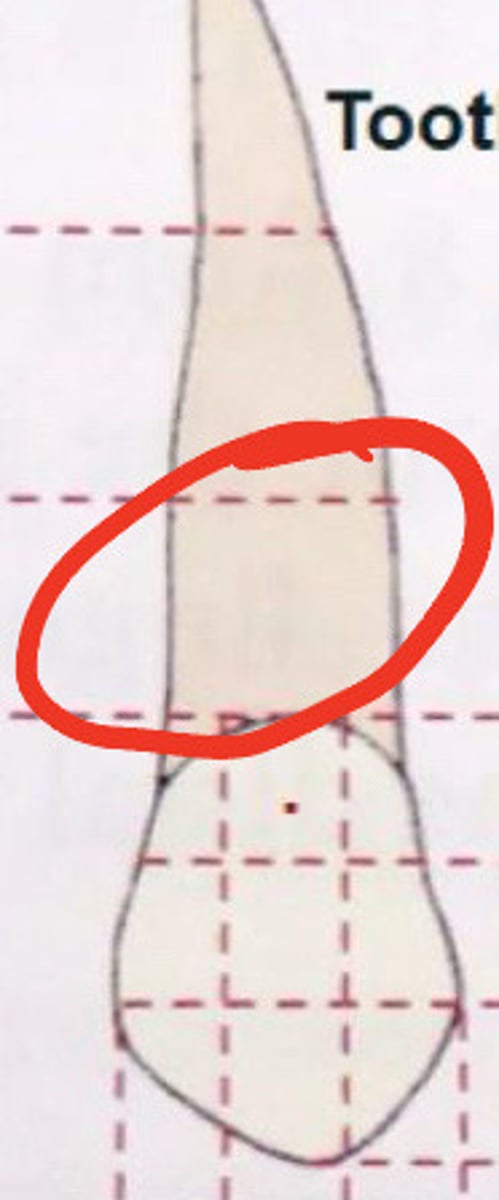
Cervical 3rd
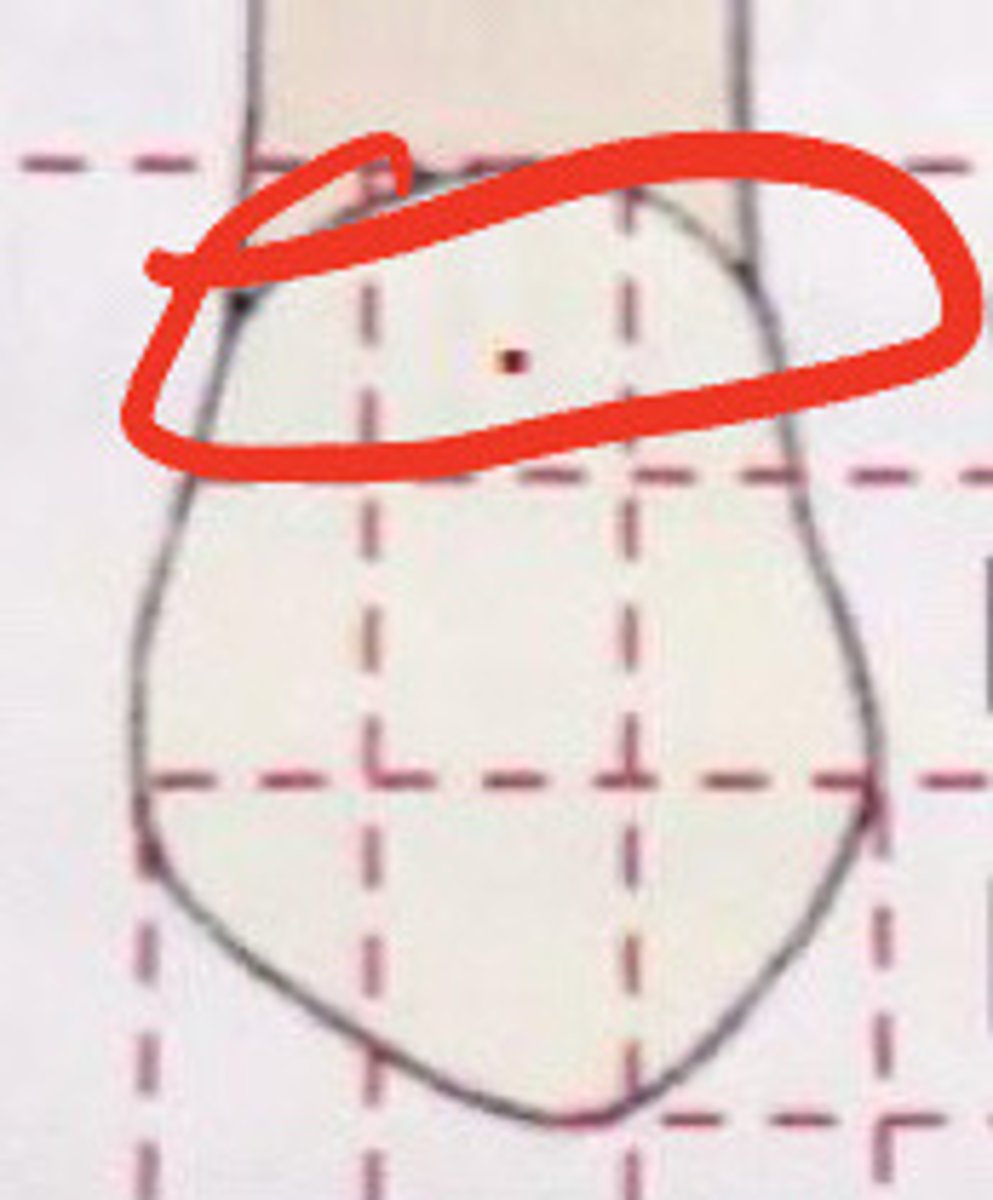
Middle 3rd
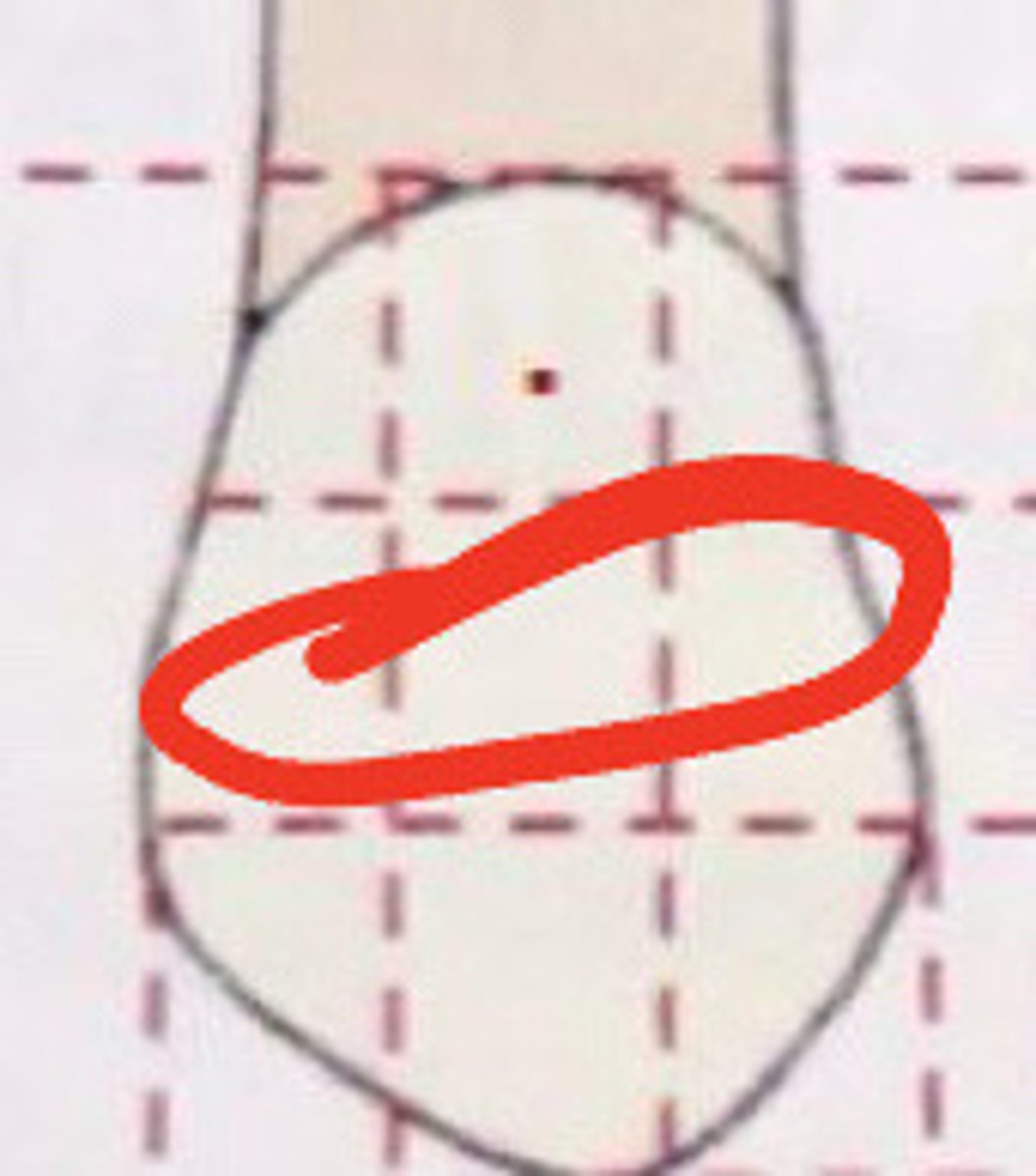
Incisal 3rd
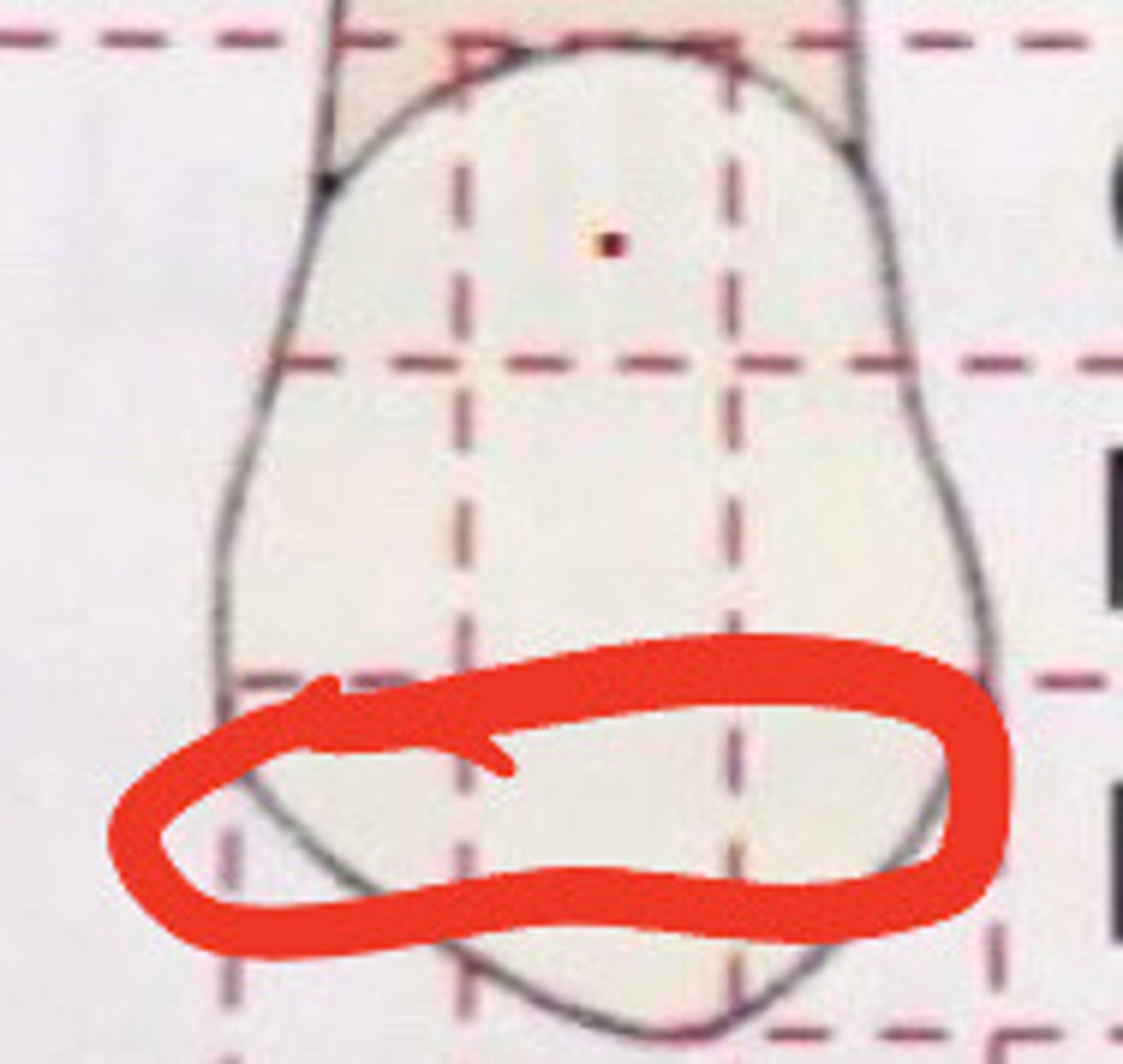
Distal 3rd
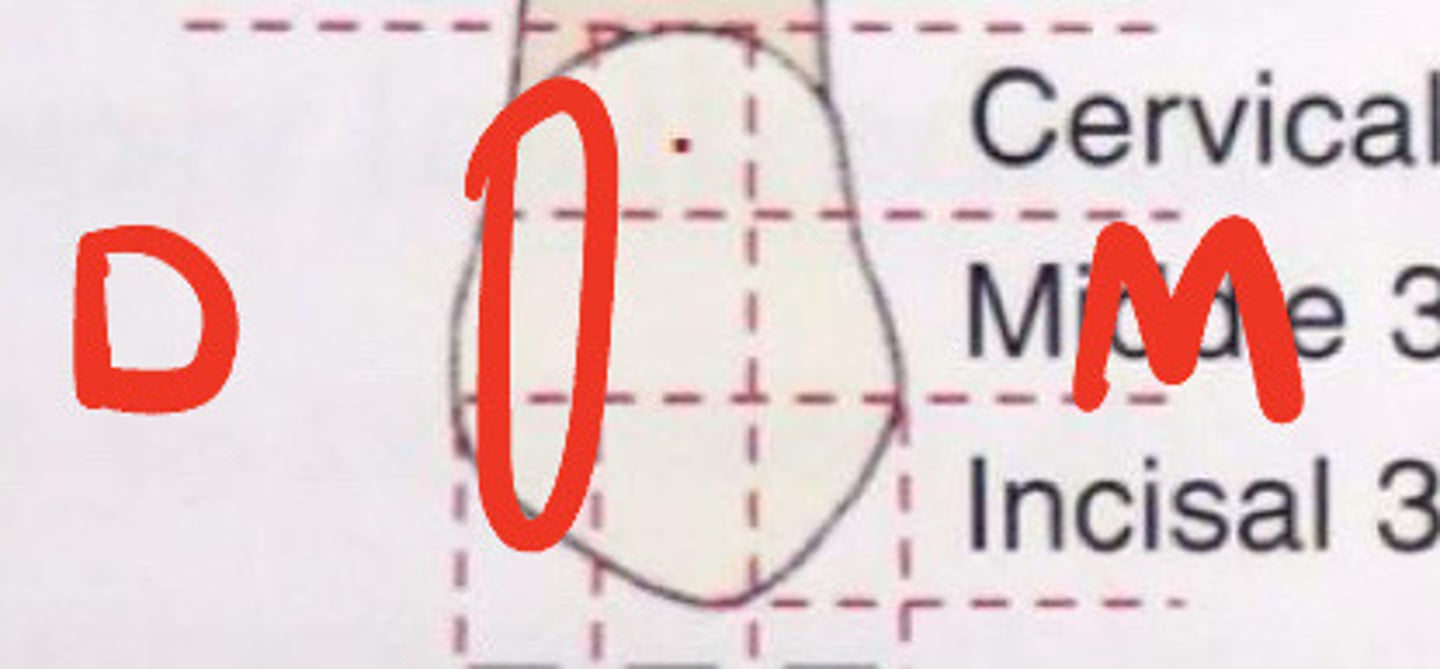
Middle 3rd
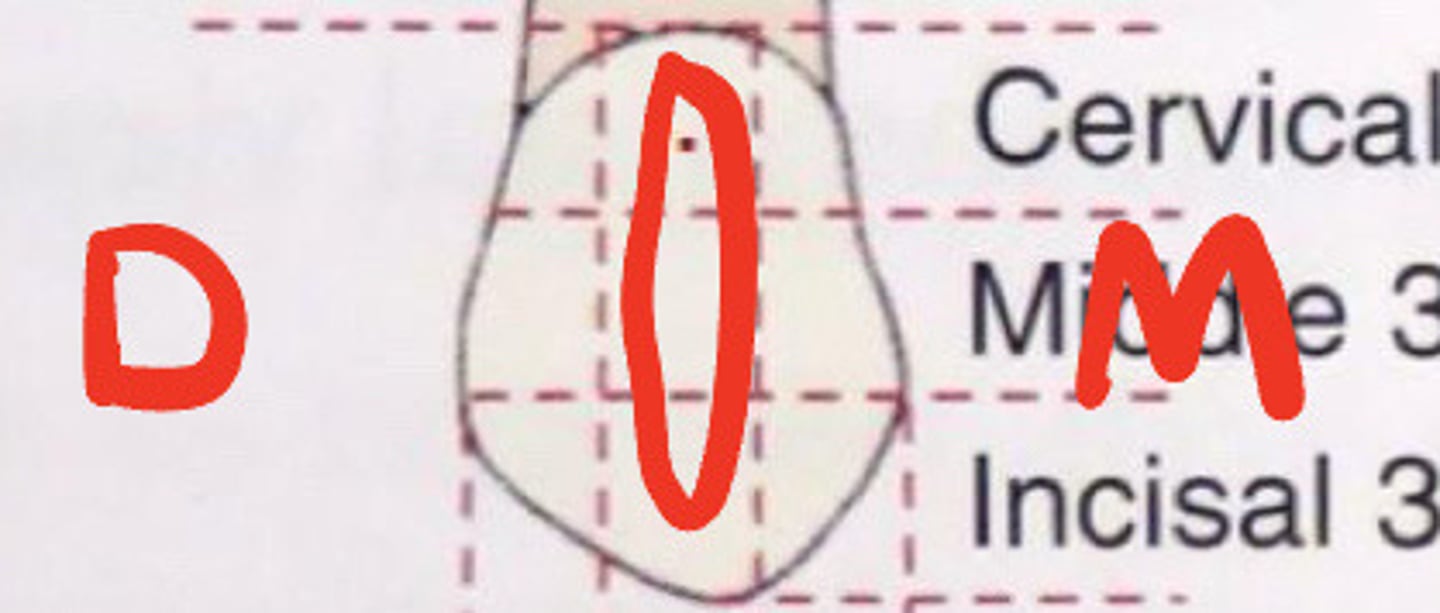
Mesial 3rd
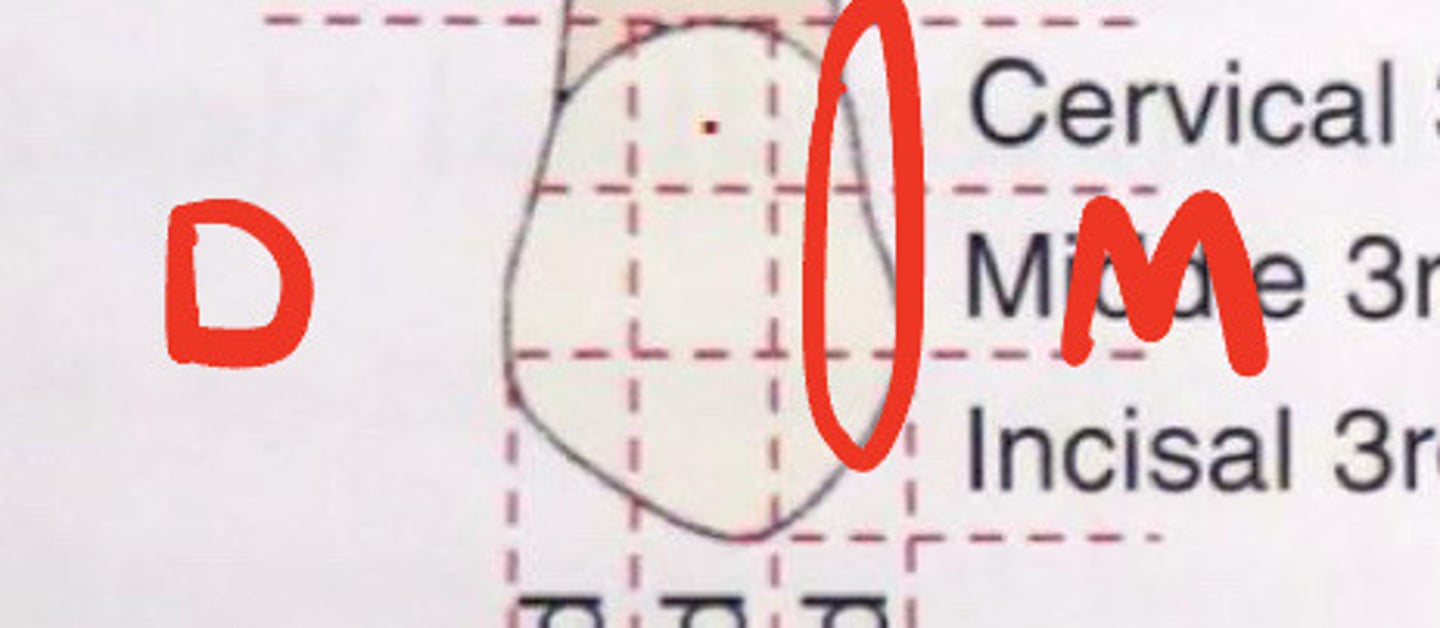
Occlusal 3rd
Posterior
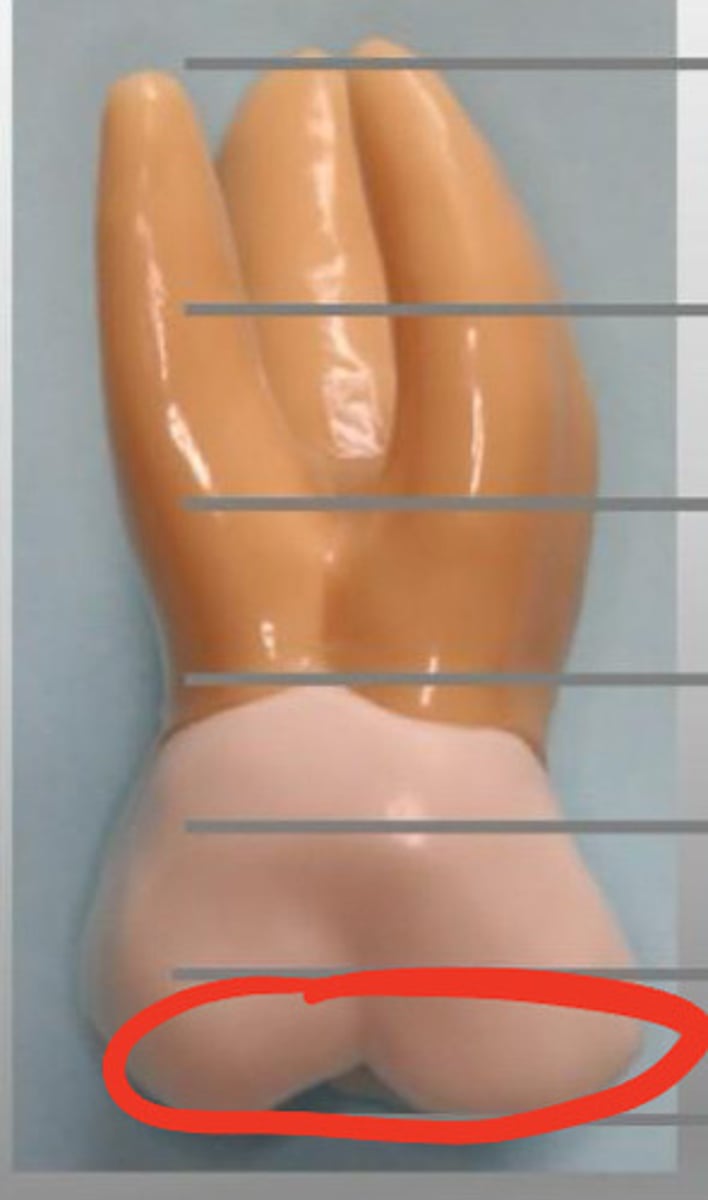
Incisal 3rd
Anterior
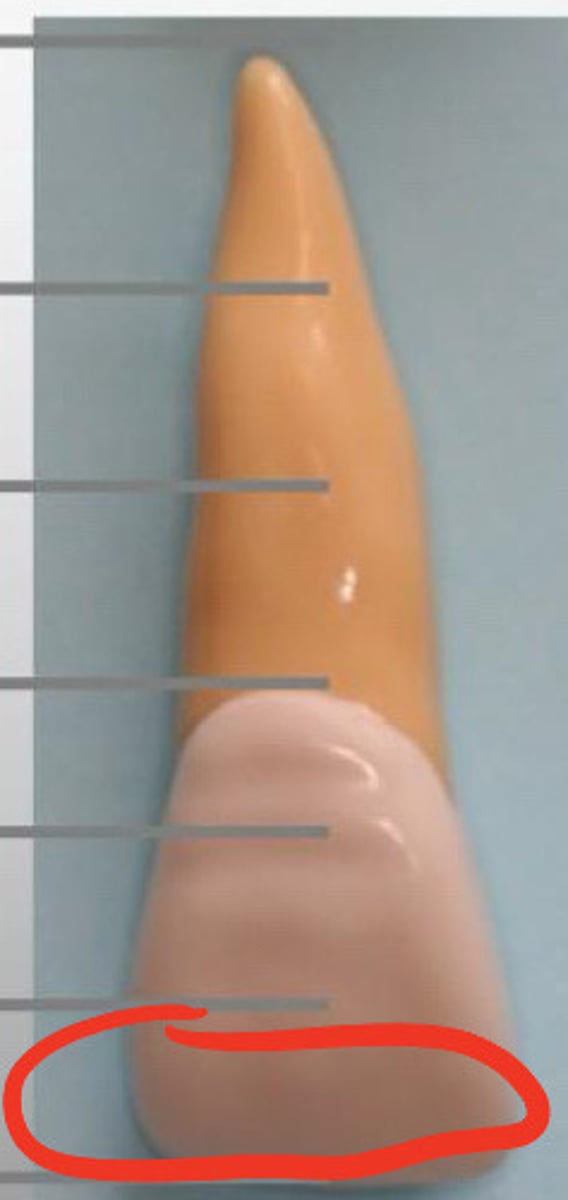
Transverse ridge
Is a ridge crossing the occlusal surface of posterior teeth in B-L direction and made of connecting triangular ridges
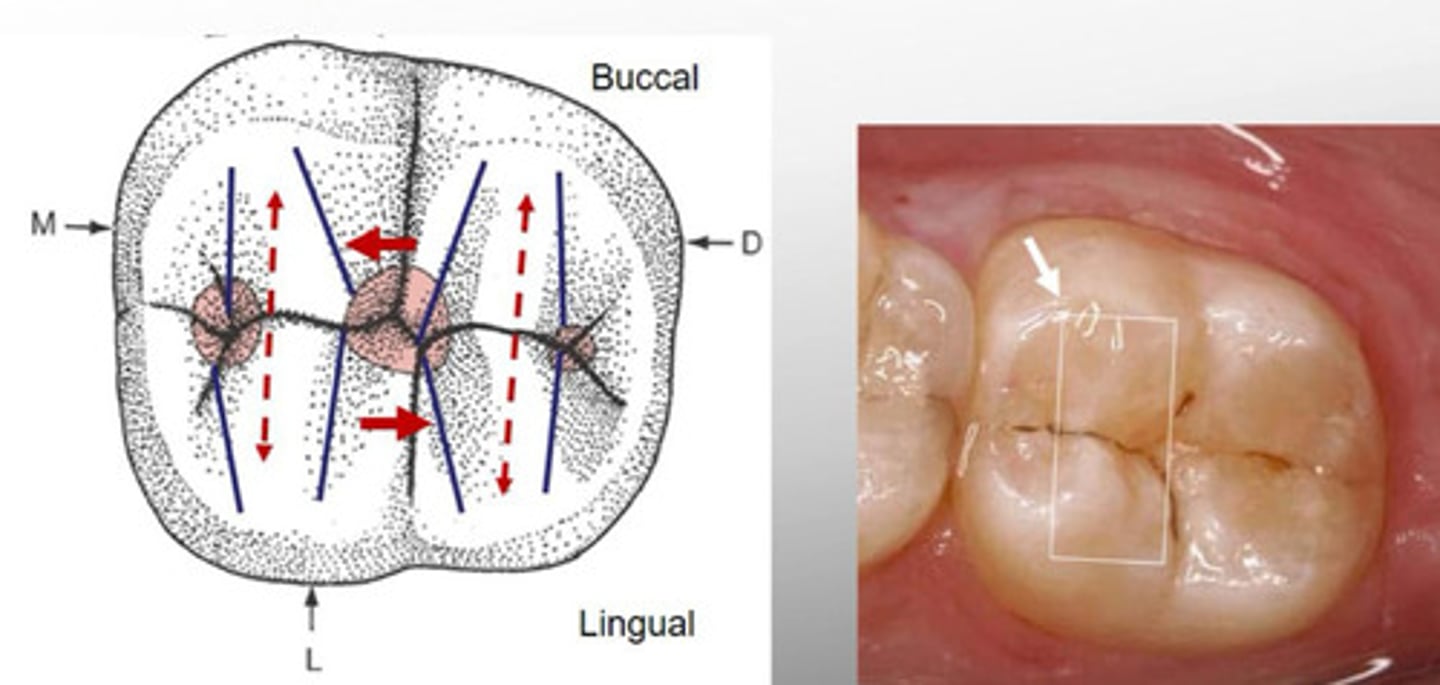
Oblique ridge
found only on maxillary molars made of the triangular ridges of the mesiolingual and distobuccal cusps
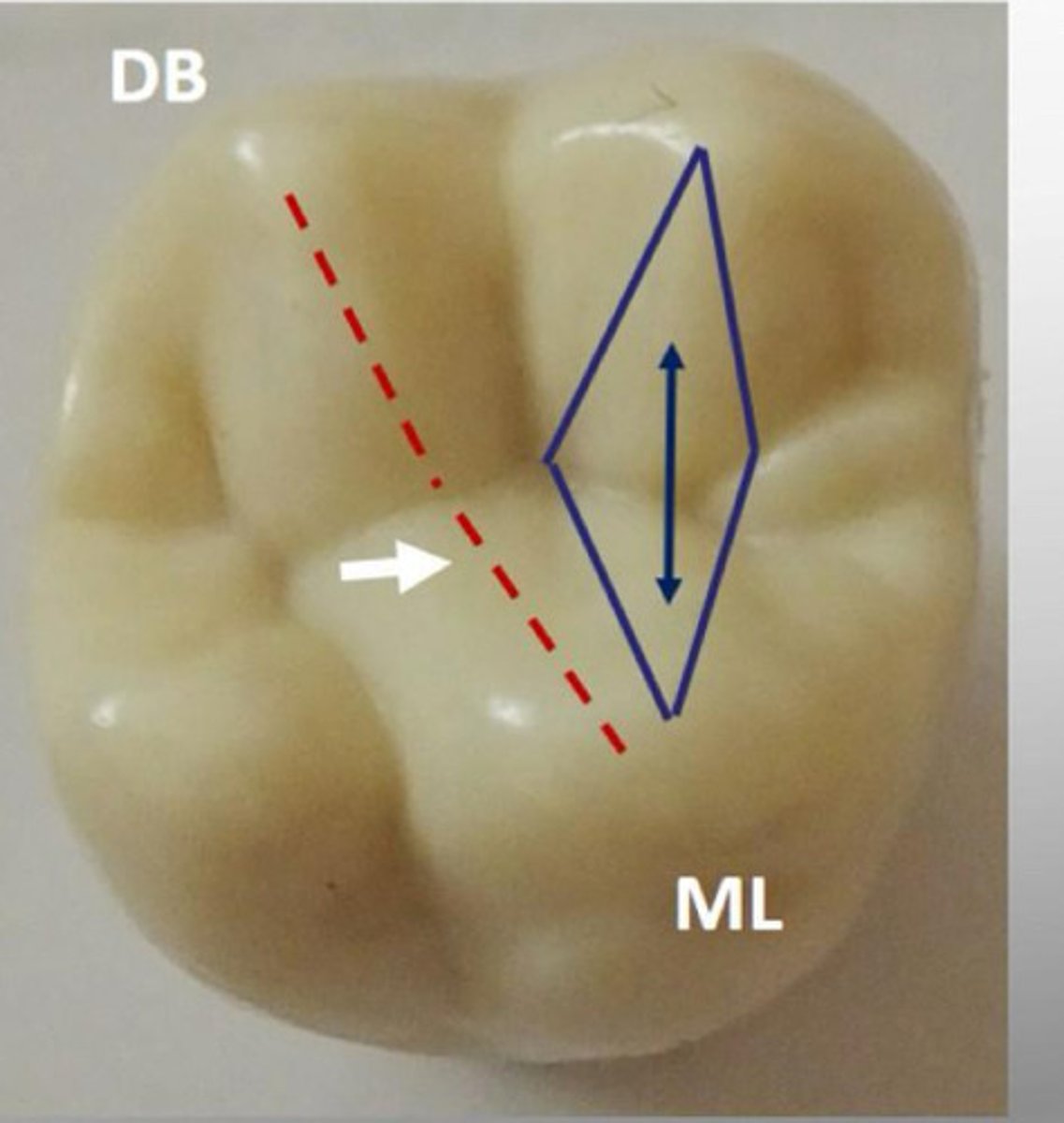
Developmental groove
sharply defined, narrow, linear depression formed during tooth development separating lobes or major portion of a tooth
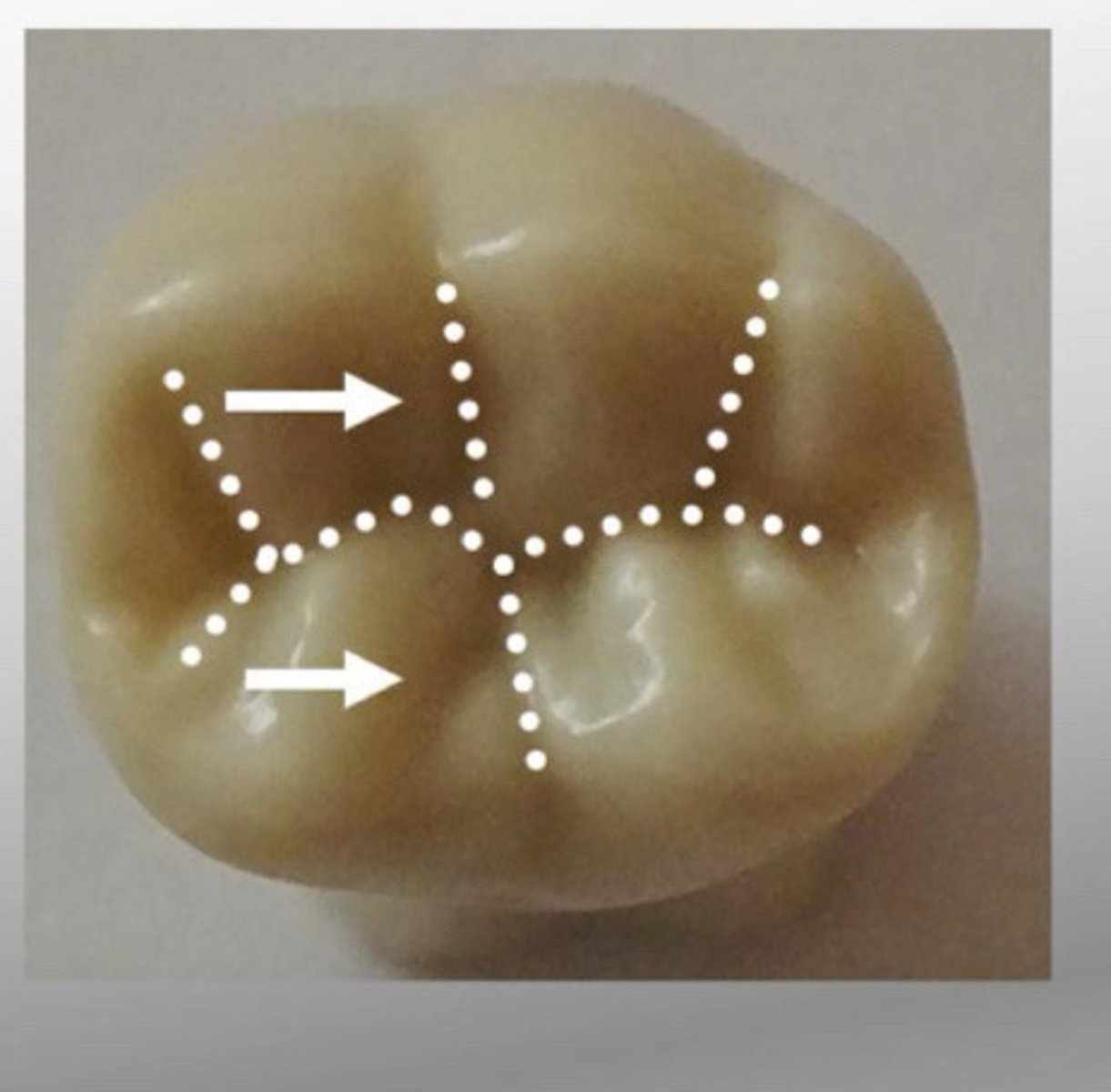
Cusp tip
Canines have ____ instead of incisal edge
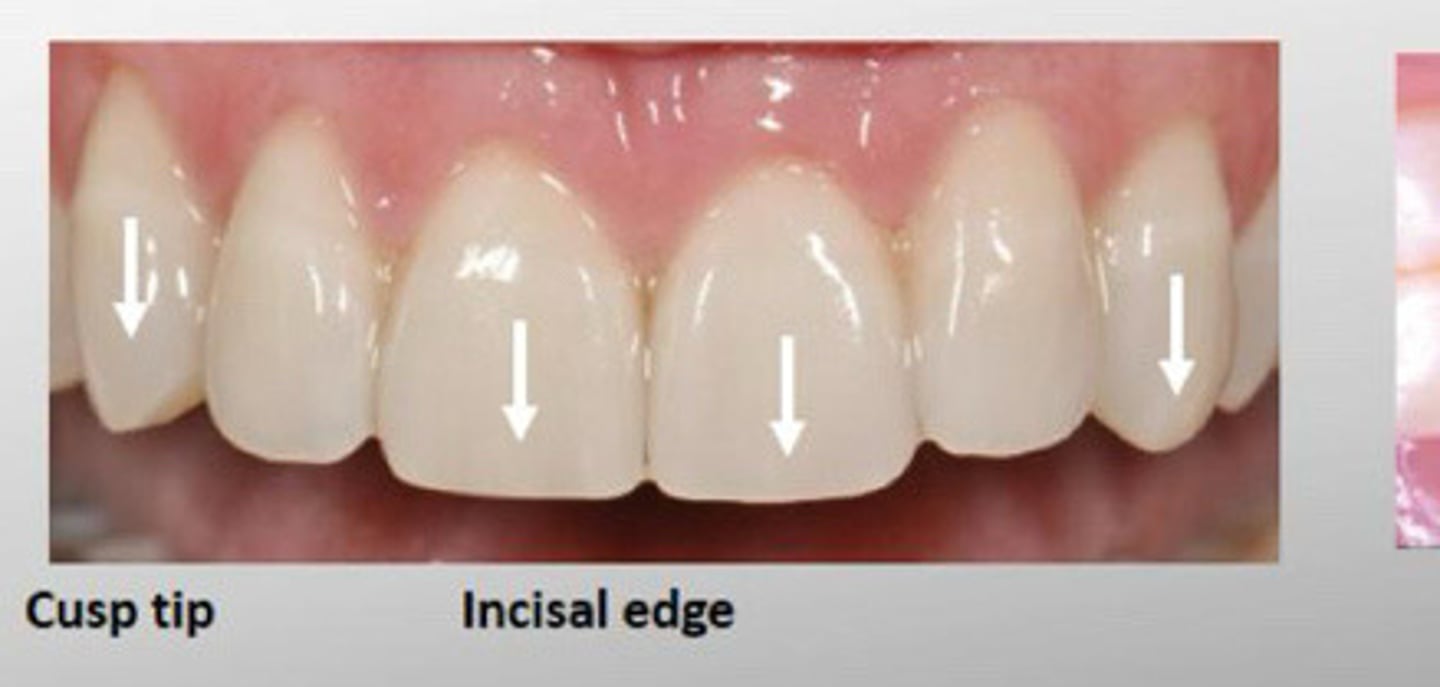
Supplemental groove
Small Irregularly placed grooves not at the junction of lobes or major portions of the teeth
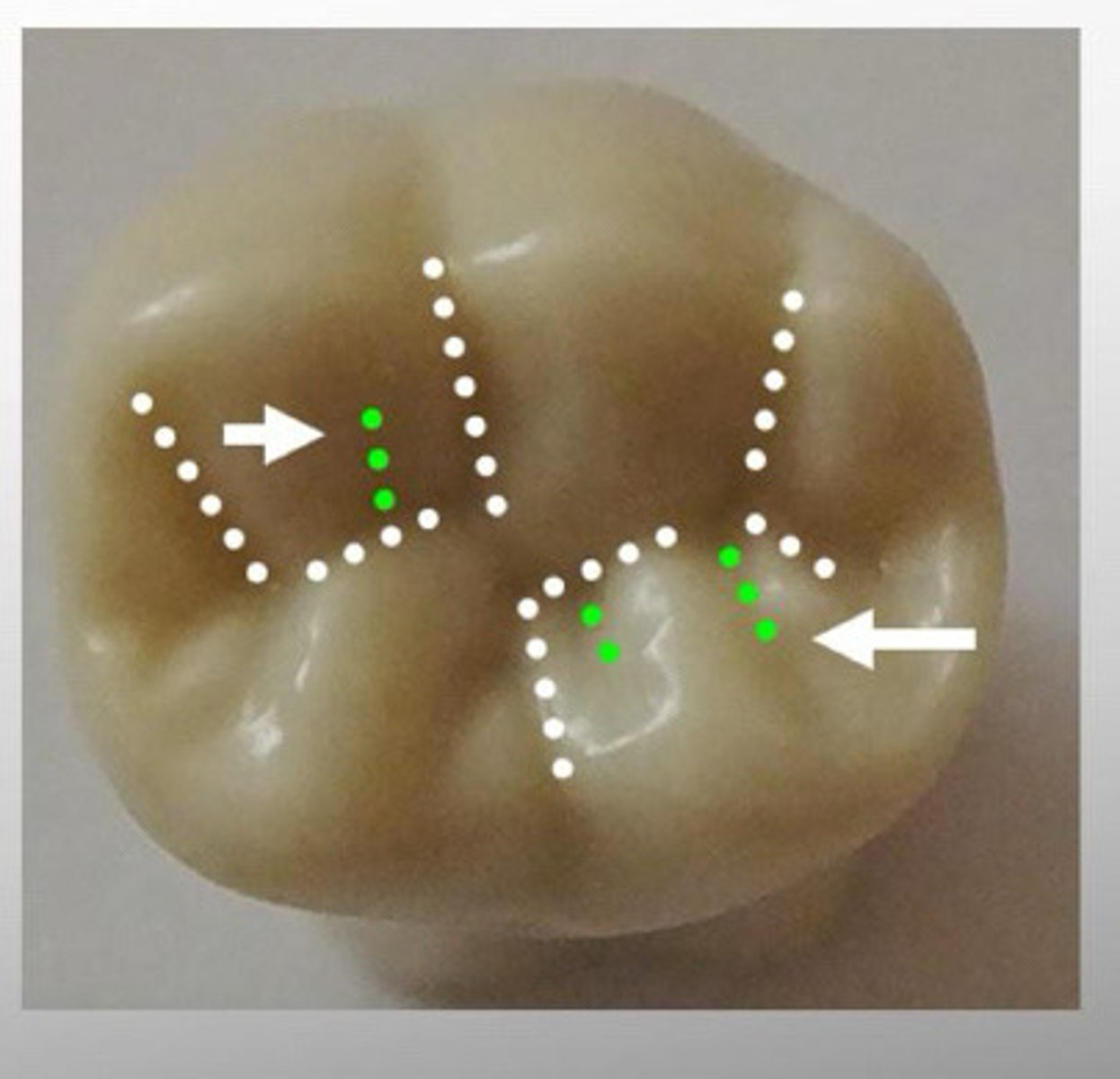
Fossa
A depression or hollow found on the lingual surfaces of some anterior teeth and on the occlusal surfaces of posterior teeth
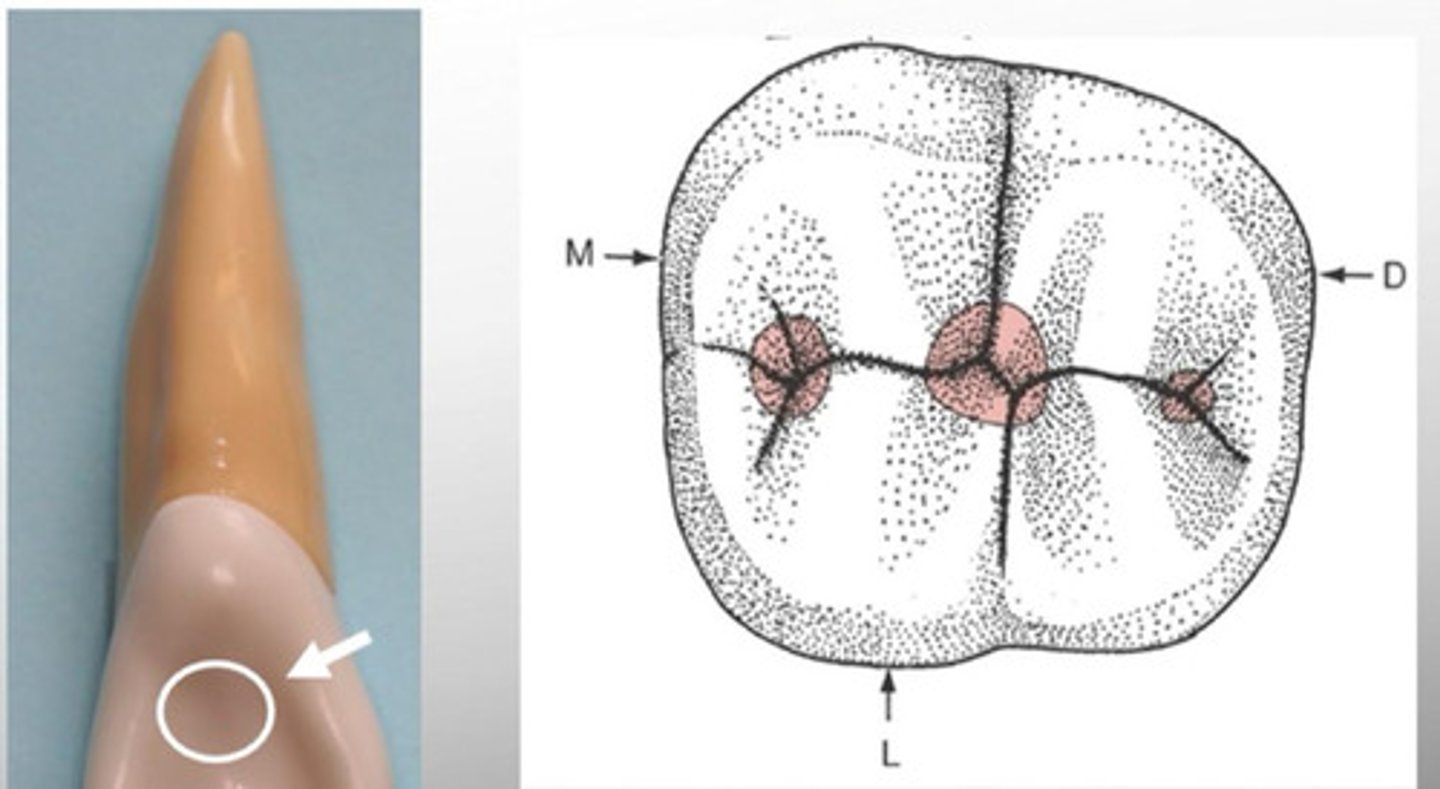
Pits
Occur at depths of fossa where two or more grooves join
